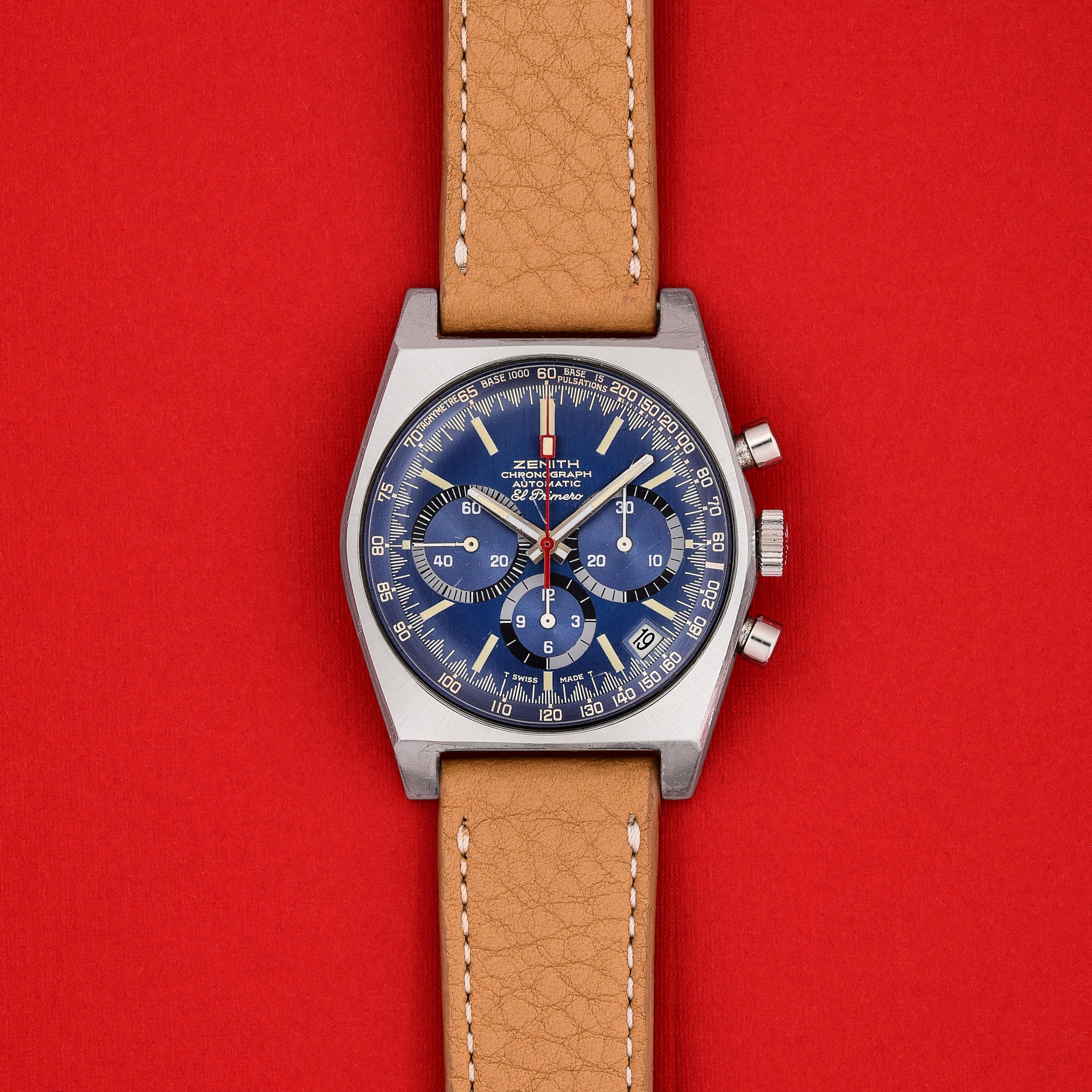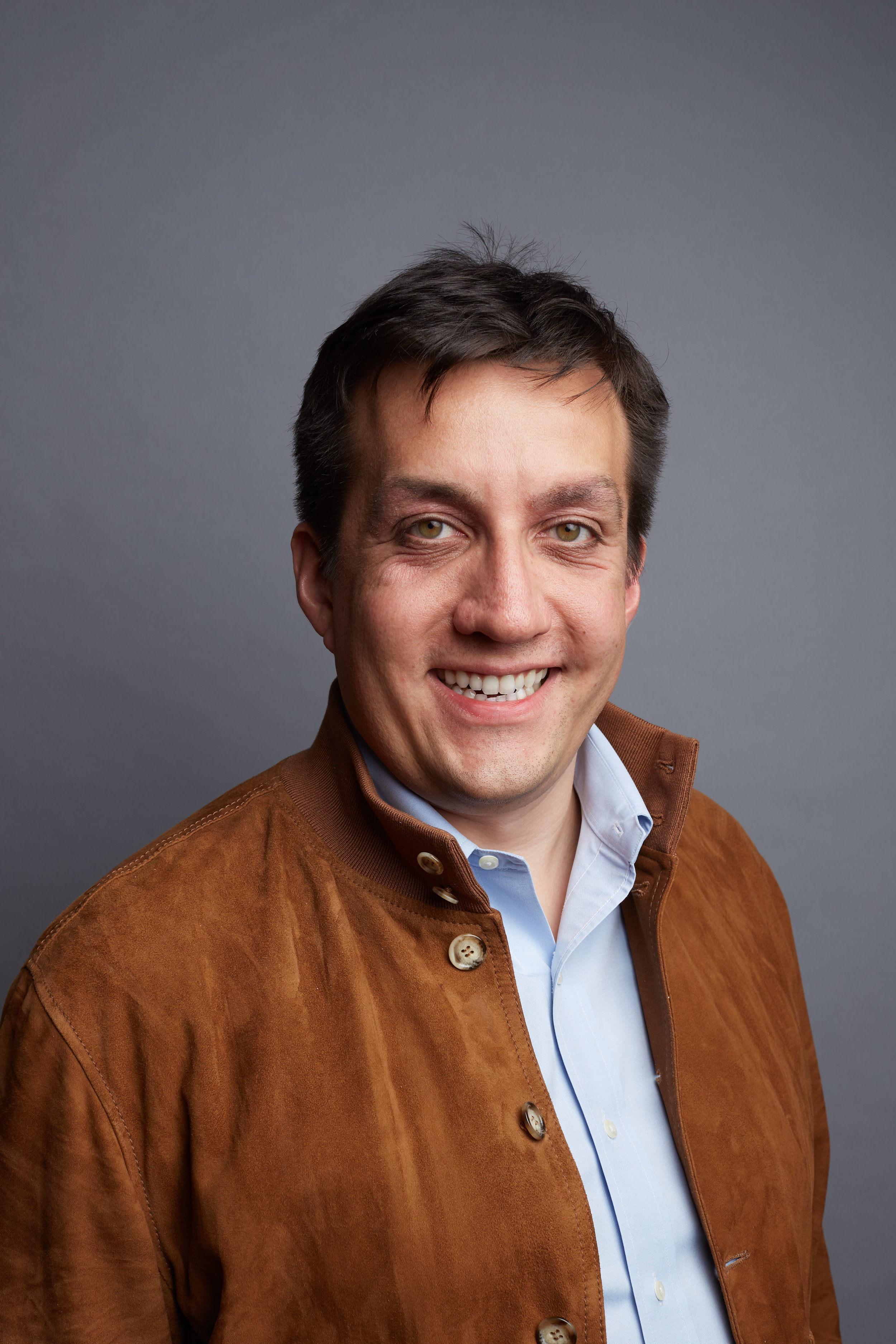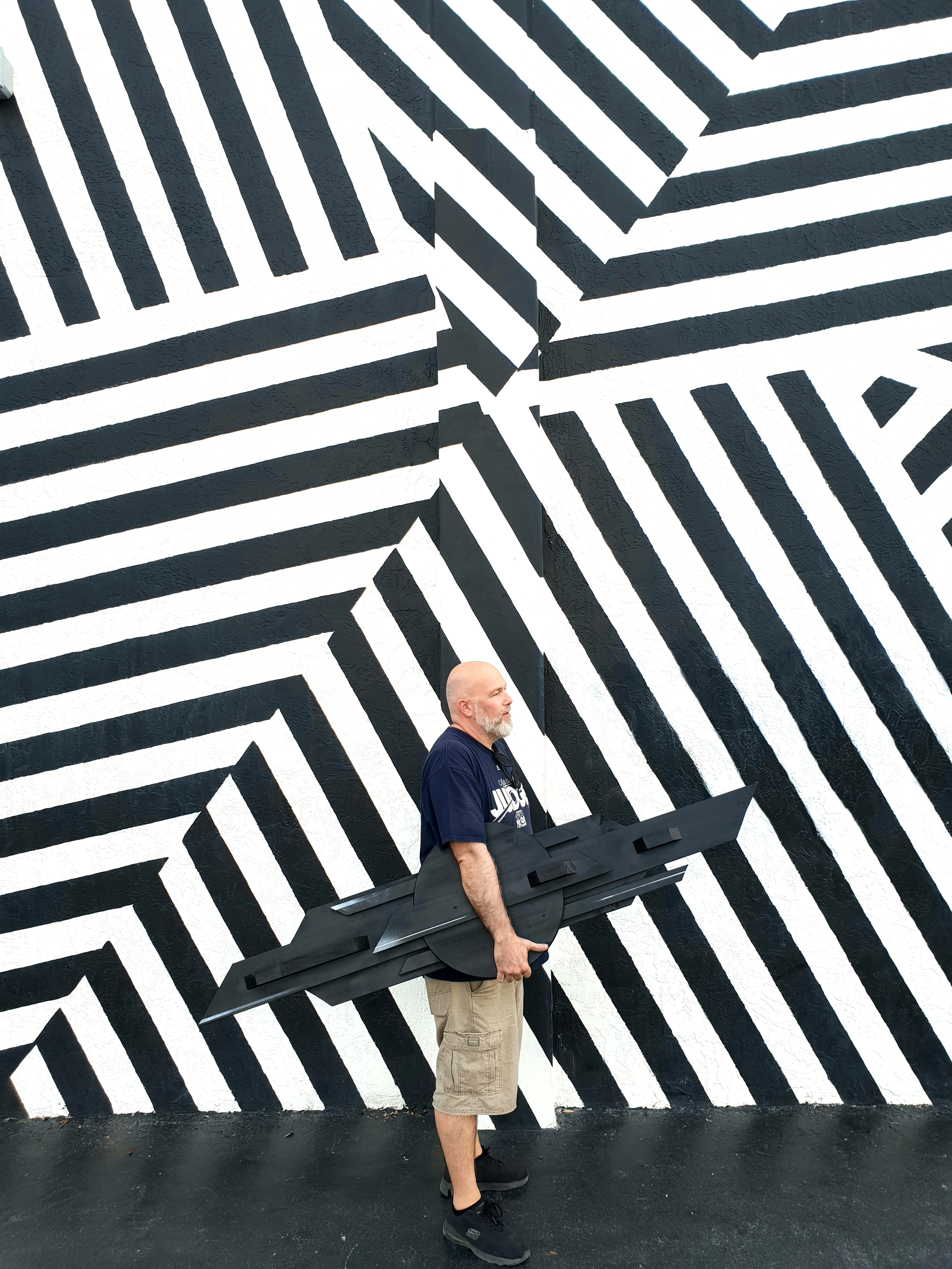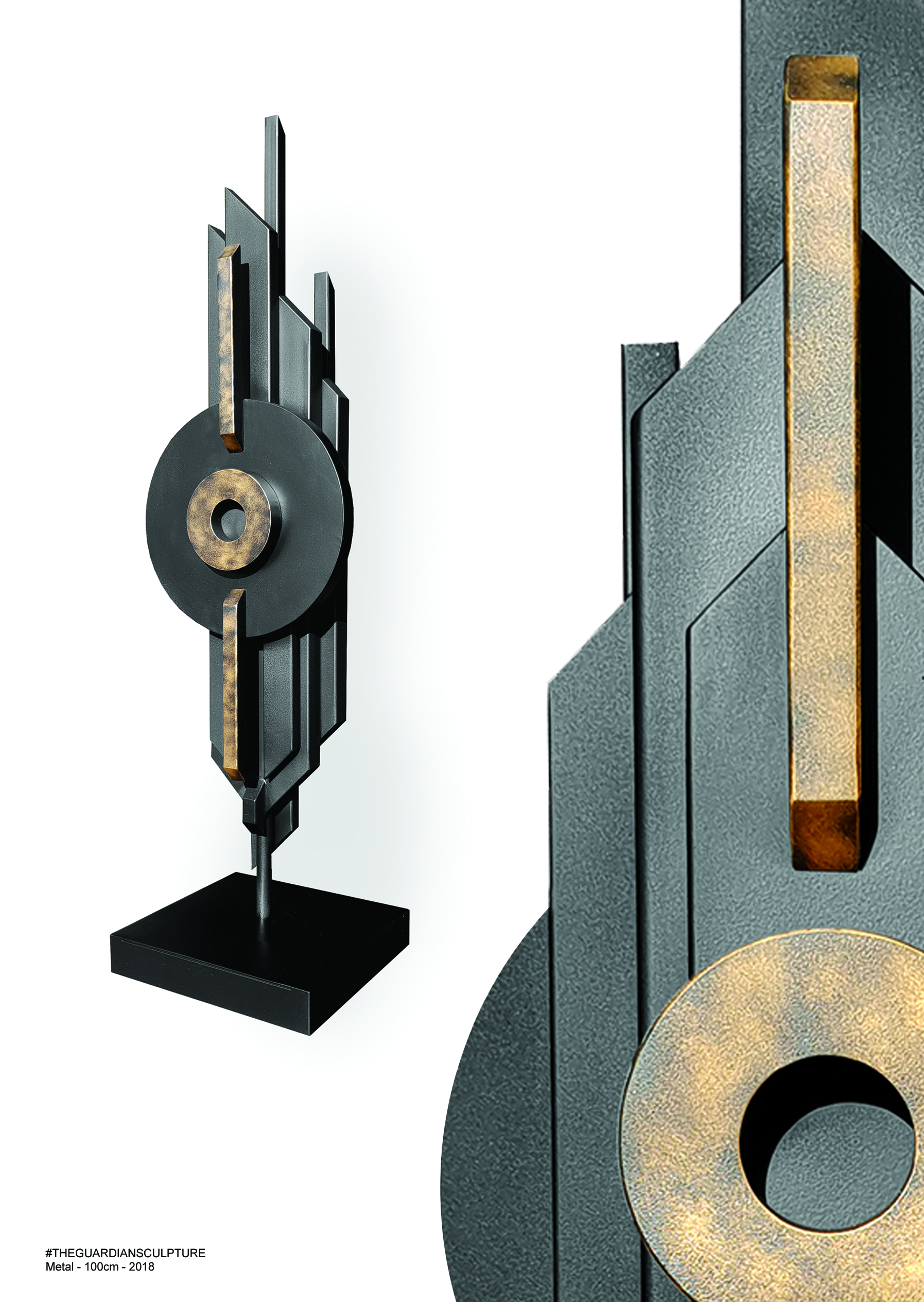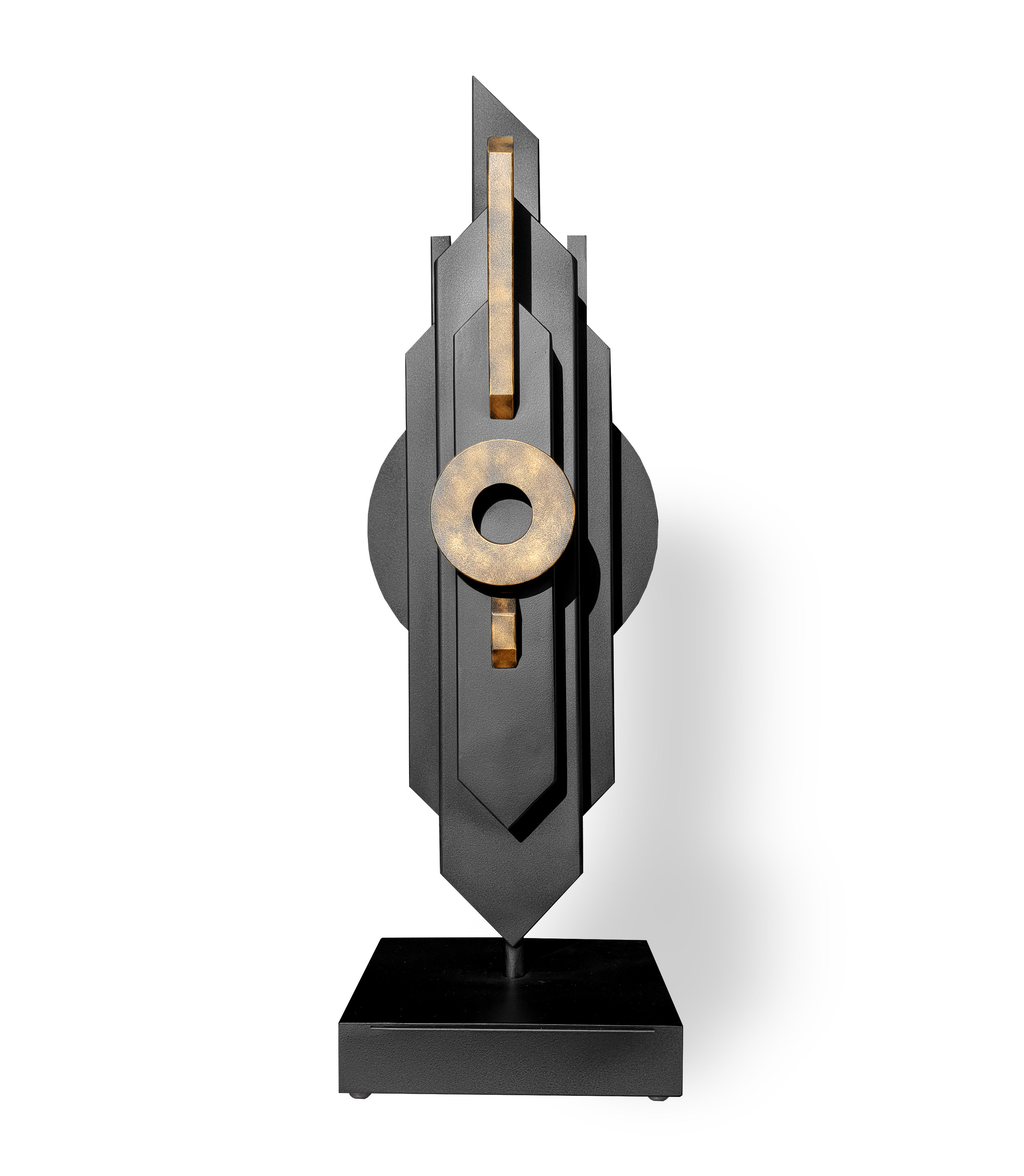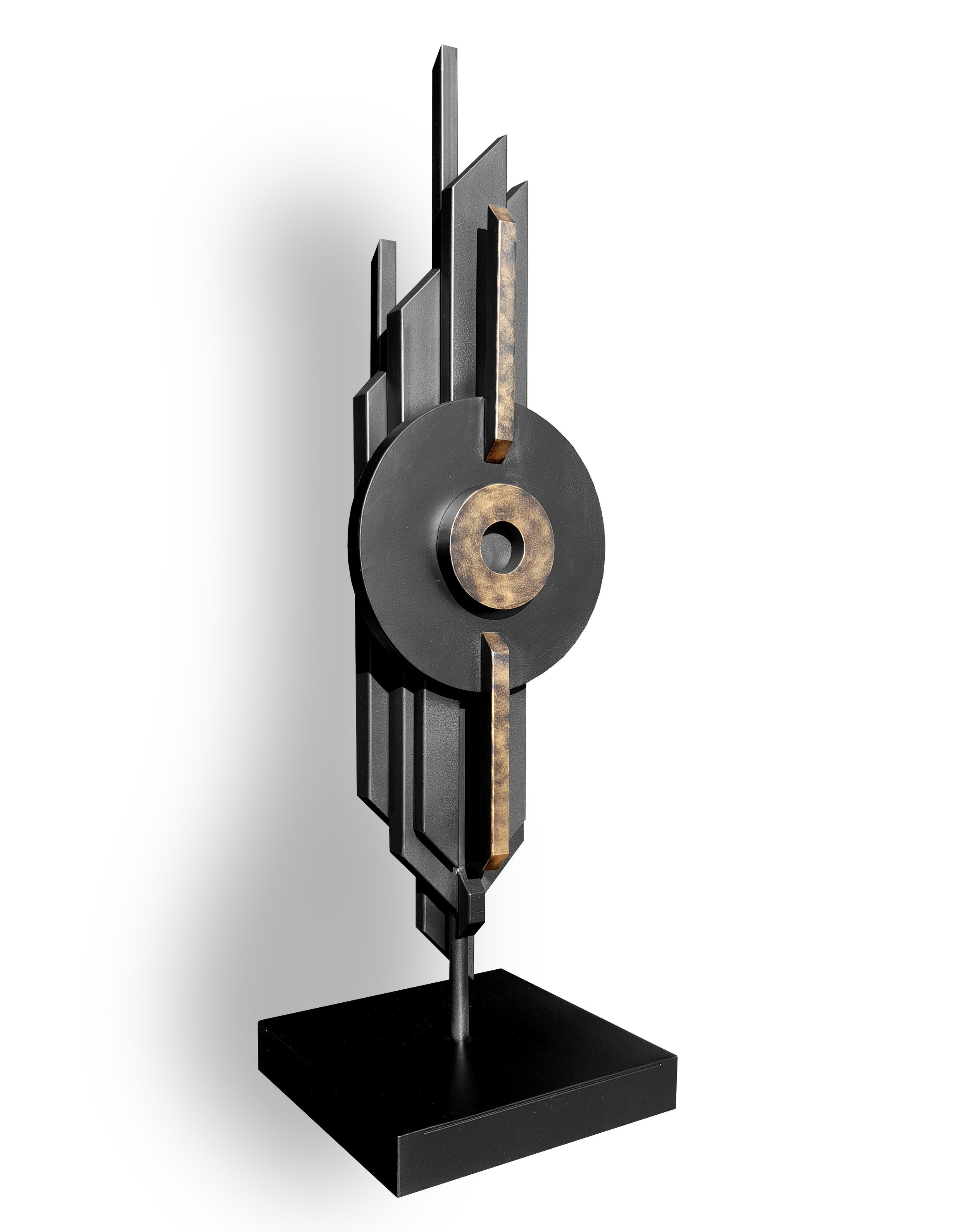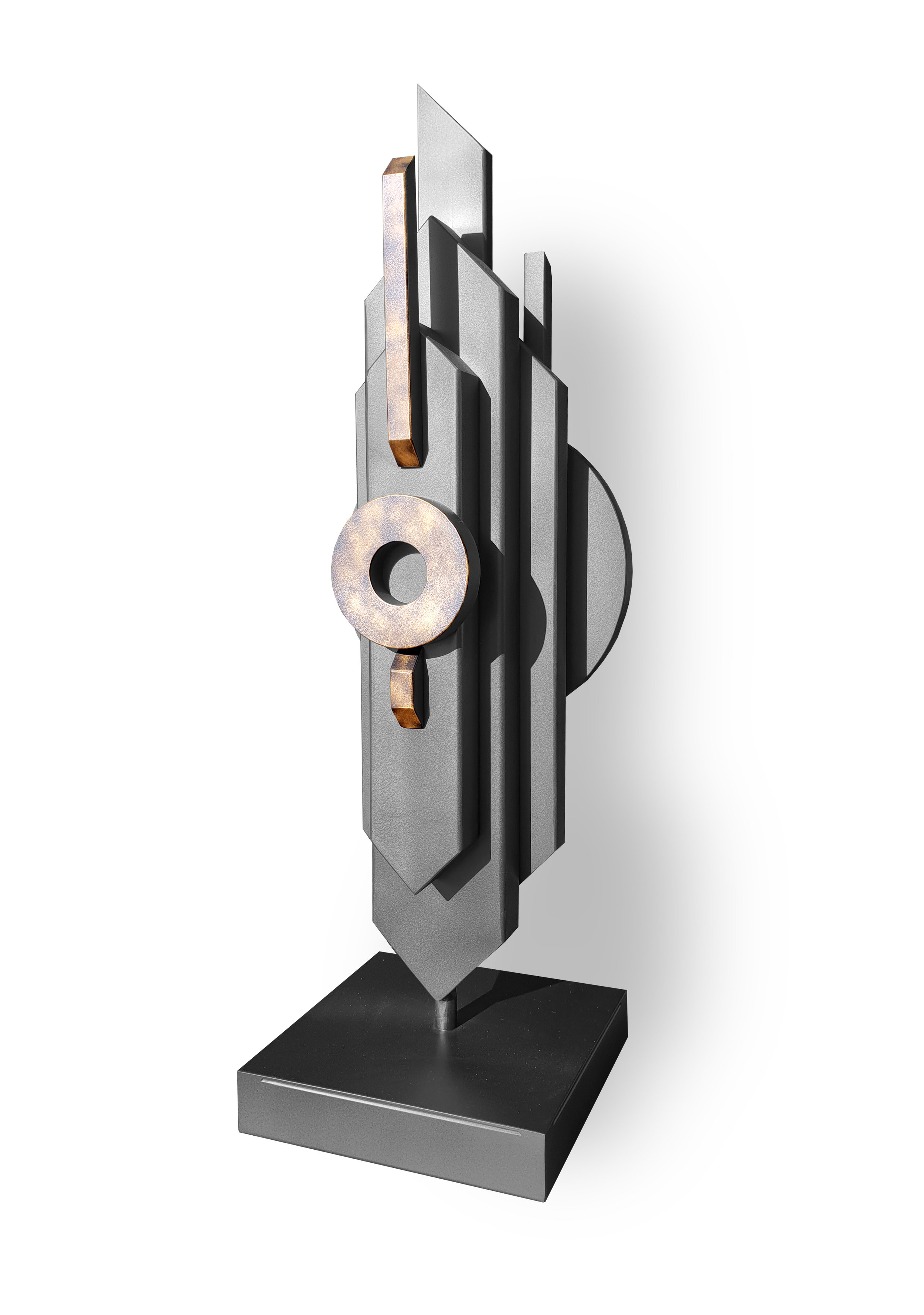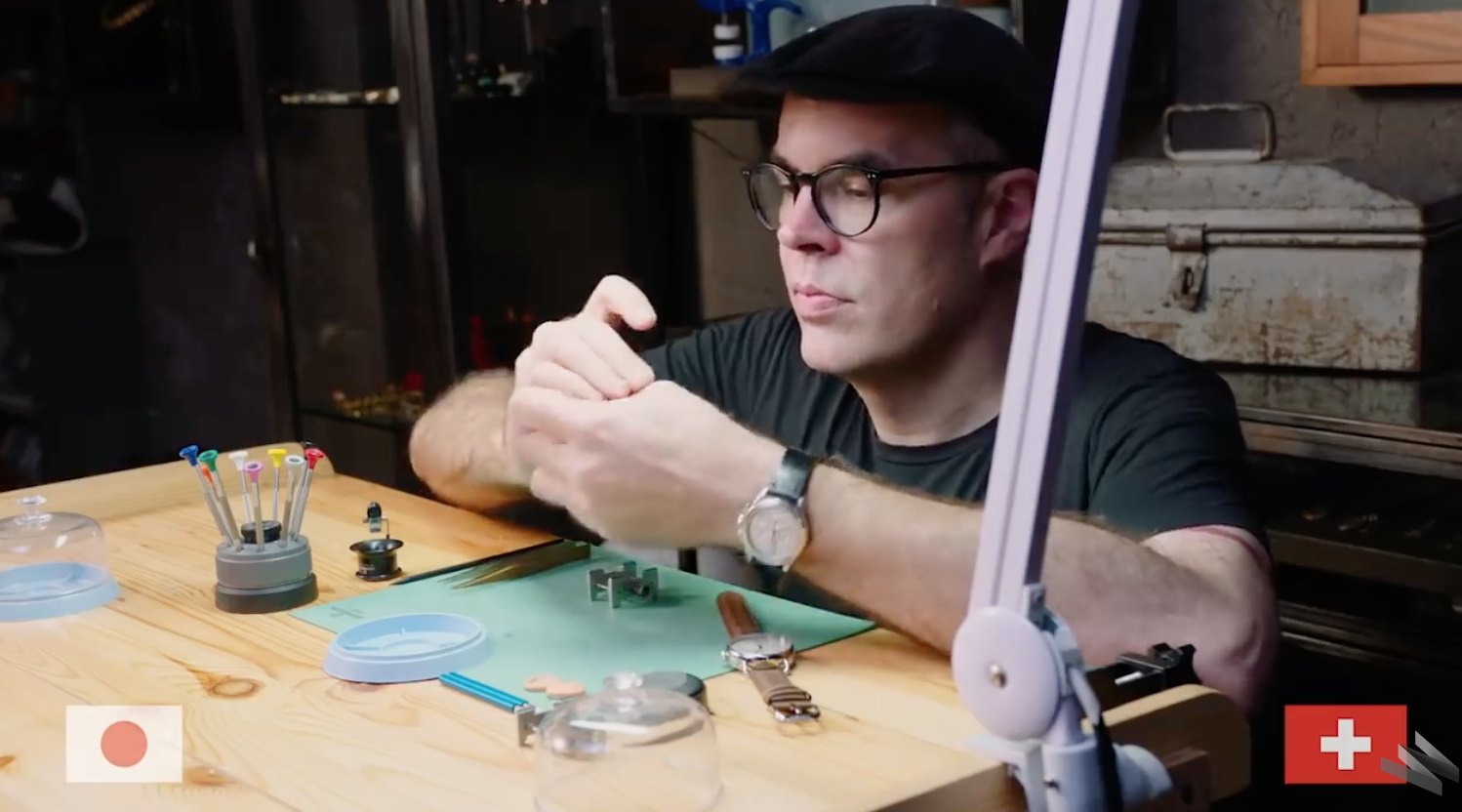
The Horologist’s Loupe
The Horological Society of New York's newsletter (and today blog!) began publishing in 1936, and is one of the oldest continuously running horological publications in the world.
The Horological Society of New York's May Lecture Attracts A Record Crowd
The record crowd at the Horological Society of New York's May Lecture. Photo by Atom Moore.
Eric Wind's recent lecture at the Horological Society of New York (HSNY) was fascinating, amusing and educational. But it was notable for another very important reason: it had the largest attendance at any HSNY lecture in over 50 years! Nearly 200 people packed the landmark General Society Library in Midtown Manhattan to hear Wind speak, even though the winter weather outside was quite cold. Attendance at recent HSNY meetings has continued to increase to the point where free tickets are required to attend to prevent overcrowding. This is a great problem to have and shows the incredible enthusiasm for horological education in New York.
Panorama of the General Society Library during the Horological Society of New York's May Lecture. Photo by Atom Moore.
50 years ago, the American watchmaking industry was at its peak and HSNY's monthly meetings attracted huge crowds on a regular basis. Back then, HSNY operated as a 501(c)(6) business league, focusing on the needs of professional watchmakers. Today, HSNY is a 501(c)(3) non-profit, focused on horological education for the public. Looking back in the HSNY archives, we found a page from the May, 1950, Horologist's Loupe (HSNY's monthly newsletter) that shows a wonderful photo of the April, 1950, lecture, with over 500 people in attendance.
HSNY is grateful for the continued support from our members and sponsors, and we look forward to seeing you at a lecture or class soon!
Page from the May, 1950, Horologist's Loupe.
HSNY Announces Auction Lots for the 2019 Gala on April 17
HSNY’s 2019 Gala & Charity Auction will be held at the Manhattan Penthouse, an incredible venue with panoramic views of the New York City skyline.
The Horological Society of New York is proud to announce the 2019 Charity Auction, presented by Christie's, which will take place at the Gala on Wednesday, April 17, 2019.
A selection of extraordinary timepieces, exceptional experiences and horological miscellanea will be up for sale, with all proceeds benefitting HSNY's ongoing educational programs. There will be no buyer's premiums, and all bidding will take place live in the room. Absentee bids will be accepted via email until 24 hours prior to the Gala & Charity Auction start time.
Preview will be held at the HSNY office & classroom from 2pm-4pm, Tuesday, April 16, 2019.
HSNY Welcomes Christie's as a Sponsor
John Reardon, International Head of Watches for Christie's, calling the HSNY 2018 Charity Auction.
New York City - March 1, 2019
Furthering the Horological Society of New York’s (HSNY) educational mission, a global leading art business Christie’s has joined as a sponsor.
The auction powerhouse’s commitment to HSNY will help ensure the 153-year-old watchmaking guild continues its monthly lecture series, international horology classes, and financial aid for the next generation of watchmakers.
“Christie’s is honored to be part of the HSNY family and to be an official sponsor of this esteemed organization,” said John Reardon, Christie’s International Head of Watches. “Behind every great watch collector is a great watchmaker forever present to maintain and preserve horological treasures from the past. It is a natural fit that Christie’s supports the vision of the HSNY and we look forward to being part of the many exciting events and initiatives planned for 2019 and beyond.”
“It is a pleasure to welcome Christie's, the world-famous auction house, as a sponsor of the Horological Society of New York,” said HSNY President Nicholas Manousos. “Founded in 1766, Christie's rich history is intertwined with horological history in a very meaningful way. Christie's generous support of the educational mission of the Horological Society of New York is incredibly motivating and will greatly aid the Horological Society of New York in promoting horological education worldwide.”
About Christie’s
Christie’s, the world's leading art business, had global auction, private and digital sales in 2018 that totalled £5.3 billion / $7 billion. Christie’s is a name and place that speaks of extraordinary art, unparalleled service and international expertise. Christie’s offers around 350 auctions annually in over 80 categories, including all areas of fine and decorative arts, jewellery, photographs, collectibles, wine, and more. Prices range from $200 to over $100 million. Christie's also has a long and successful history conducting private sales for its clients in all categories, with emphasis on Post-War & Contemporary, Impressionist & Modern, Old Masters and Jewellery.
Alongside regular sales online, Christie’s has a global presence in 46 countries, with 10 salerooms around the world including in London, New York, Paris, Geneva, Milan, Amsterdam, Dubai, Zürich, Hong Kong, and Shanghai.
About the Horological Society of New York
Founded in 1866, the Horological Society of New York (HSNY) is one of the oldest continuously operating horological associations in the world. Today, HSNY is a 501(c)(3) nonprofit organization dedicated to advancing the art and science of horology through education. Members are a diverse mix of watchmakers, clockmakers, executives, journalists, auctioneers, historians, salespeople and collectors, reflecting the rich nature of horology in New York City; http://hs-ny.org.
HSNY Welcomes Massena LAB as a Sponsor
William Massena, Founder and CEO of Massena LAB, lecturing on how to win (and sometimes lose) at watch auctions, March 6, 2017.
New York City - February 28, 2019
The Horological Society of New York (HSNY) announces artisanal watchmaking company Massena LAB has joined as a sponsor. Helmed by William Massena, Founder and CEO of Massena LAB and Trustee of HSNY, the latest sponsorship directly aids America’s oldest watchmaking guild in fulfilling its educational mission.
Massena LAB prides itself on partnering with independent watchmakers to conceptualize unique timepieces from sketch to wrist - echoed by HSNY’s mission to advance the art and science of horology through education. With Massena LAB’s support, HSNY is able to continue monthly lecture series, enhance horology classes worldwide, and secure scholarship opportunities for future watchmakers.
“Massena LAB is delighted to become a sponsor of the Horological Society of New York,” said Massena. “Our aim is to encourage the creativity of independent watchmakers, and the continuation of traditional techniques. The education of the next generation of horologists is key to our future success.”
“It is wonderful to welcome Massena LAB as a sponsor of the Horological Society of New York,” said HSNY President Nicholas Manousos. The brand's innovative work in collaborating with creative independent watchmakers is encouraging on many levels, and their focus on watchmaking as art can motivate us all to enjoy horology from a different perspective. Massena LAB's kind support of the Horological Society of New York's educational mission is heartening, and will greatly aid us in promoting horological education worldwide.”
About Massena LAB
Massena LAB was manifested from the desire to re-discover the craft of artisanal watch making in an age of saturated mass production, and aims to be a leader in producing rare, original timepieces.
Massena LAB prides itself in conceiving, designing and developing timepieces with independent watchmakers who machine, craft, assemble, test and finish their timepieces. https://www.massenalab.com
About the Horological Society of New York
Founded in 1866, the Horological Society of New York (HSNY) is one of the oldest continuously operating horological associations in the world. Today, HSNY is a 501(c)(3) nonprofit organization dedicated to advancing the art and science of horology through education. Members are a diverse mix of watchmakers, clockmakers, executives, journalists, auctioneers, historians, salespeople and collectors, reflecting the rich nature of horology in New York City; http://hs-ny.org.
In The News: Atlas Obscura Explores the World of Horology at HSNY
Have you ever been curious about the Horological Society of New York (HSNY) Education courses? Would you like to know more about the class setup and what can be gained from Horology 101 – 104?
Curiosity recently brought the Atlas Obscura team to our headquarter, where Deputy Editor Samir Patel joined HSNY President Nicholas Manousos for a one-on-one lesson in horological education.
Thank you to the entire Atlas Obscura team for creating a magnificent video showcasing a few of HSNY’s marvels. If you’re ready to take a class with us you can sign up here!
THE SCIENCE OF WATCH REPAIRING IS INCREDIBLY EXQUISITE #AtlasObscuraTries
HSNY Joins The Hundred Year Association of New York
A lot can happen in a century. Wars have taken place, scientific discoveries have been made, and pop culture has evolved drastically. But on a more microscopic level, there is an elite group of organizations that have not ceased to exist, serving their members, staying true to their missions, and evolving with the times. Today, the Horological Society of New York (HSNY) is officially one of them.
HSNY proudly announces today its induction to The Hundred Year Association of New York, a 501(c)(3) nonprofit organization whose mission is “to preserve the history and promote the heritage of public and private organizations that have been in existence for a century or more.”
Through this recognition, HSNY has solidified a spot in the history books alongside industry legends including Tiffany & Co., Cartier, Inc., The General Society of Mechanics and Tradesmen (home to HSNY’s classroom and office), American Heart Association, American Museum of Natural History and more.
HSNY is grateful to be inducted as a member and especially gracious to its HSNY members who continue to aid in the mission to advance the art and science of horology through education.
For more information about The Hundred Year Association of New York, visit https://100yearassociation.com.
Deadline for the $10,000 Henry B. Fried Watchmaking Scholarship is Approaching Soon!
Henry B. Fried instructing students on escapement mechanics. Photo courtesy of the Brooklyn Public Library—Brooklyn Collection.
Watchmaking is a vibrant, rewarding and dynamic career, and the Horological Society of New York (HSNY) wants to help as many people study and enter the profession as possible. For 2019 the Henry B. Fried Scholarship is dramatically expanding, with multiple students to be awarded the $10,000 prize. The application period for the scholarship closes on Friday, March 1, and the scholarships will be awarded at HSNY's annual Gala & Charity Auction on April 17, 2019. Don't delay - get your application in today!
Henry B. Fried (1907-1996) was president of the Horological Society of New York, president of the New York State Watchmakers Association, and vice-president of the Horological Institute of America (a precursor to the American Watchmakers-Clockmakers Institute.) A prolific author, Fried authored 14 books on watchmaking that continue to be in high demand. He was the first American to receive the Silver Medal of the British Horological Institute, and the New York Times described him as “the dean of American watchmakers.” In short, Fried exemplified every value HSNY pursues today.
Any student who has been accepted or is currently studying at a full-time watchmaking school in the USA is eligible for the Henry B. Fried Scholarship. Prospective students may also apply, with the understanding that the scholarship is contingent on their enrollment at a full-time watchmaking school. More information is available at HSNY's Henry B. Fried Scholarship page.
Upcoming Lecture: Collecting Vintage Watches: How to Avoid Common Mistakes, Issues for Collectors to Discuss, and the Future of the Market
Join HSNY on Monday, March 4, 2019 for a lecture on Collecting Vintage Watches: How to Avoid Common Mistakes, Issues for Collectors to Discuss, and the Future of the Market, by Eric Wind, Owner of Wind Vintage.
With the explosive growth in interest and values for vintage watches in recent years, how can new collectors successfully navigate and enjoy the world of vintage watches? The field of vintage watches is in an interesting place with more minefields than ever in the realm of collecting, a staggering amount of animosity on social media and watch fora, and a concerning lack of curiosity around new watch scholarship today. At the March 4, 2019, meeting of the Horological Society of New York, Eric Wind will discuss the common mistakes he sees beginning collectors making and also will raise important questions for the collector community to discuss, including restoration, tracking provenance, third-party grading and watch registries, how to educate those interested in acquiring vintage watches, and the future of the market.
READ THE FULL STORY HERE!
Welcoming New HSNY Members, February 2019
HSNY would like to welcome the following new members. It is with your help that we are able to continue flourishing as America's oldest watchmaking guild, and your commitment to HSNY helps us advance the art and science of horology every day.
Jordan Ferry, FL
Joseph M Lombardo, NJ
Kevin Doyle, Washington, D.C.
Kyle P Kenyon, MO
Mark Cho, NY
Michael Rogers, NY
Rene Quiroz, NY
Robert C. Cheney, MA
Robert Del Castillo, CA
Weekeat Ng, Singapore
Whitney Bria, CT
Yang Xu, NY
Agam de Bonth, Netherlands
Alexandra Ainatchi, NY
Anne D Miller, MD
Barnett Geller, NY
Brian Davison, FL
C K Griffith, NY
Dan Langan, NY
Dean Sarnelle, VA
Henry Wong, NY
Gerard Connolly, MA
Jimmy Hsieh, CA
Joel Berstein, NY
Click here for membership benefit information and to join HSNY!
Don’t forget to purchase your ticket to the Gala & Charity Auction on April 17!
Meeting Recap: The Secrets of Horological Engine-Turning (Guilloché)
Video recordings of lectures are available to members immediately (using your membership password), and the general public with a 2 month delay.
Joshua Shapiro, Watchmaker and Owner of J.N. Shapiro Watches
February 4, 2019
At the February 4, 2019 lecture at the Horological Society of New York, Joshua Shapiro, Watchmaker and Owner of J.N. Shapiro Watches, graced attendees with his passion of engine turning and how growing up in a machine shop steered him towards watchmaking. Shapiro divided his lecture, The Secrets of Horological Engine-Turning (Guilloché), into four parts:
What is engine turning?
How does engine turning work?
What is the history of engine turning?
What is my contribution?
WHAT IS ENGINE TURNING?
Shapiro made sure to point out that ‘engine turned’ is spoken in English-speaking countries, whereas ‘guilloché’ is used everywhere else. The three machines that Shapiro highlighted were the Rose Engine Machine, Straight Line Machine and Brocading Machine.
HOW DOES ENGINE TURNING WORK?
Rose Engine Machine: The most famous and recognized, the machine is used for circular lines as the transfer workpiece is stationary then locks. Images of the MADE Rose Engine Machine used by David Lindow and the Frank Dorian 1851 Custom Made exemplified the workings of rose engine machinery. A video of the rose engine showed an example of a hand-operated machine creating a heart-shaped rosette. The magnification (10x) of the pattern was to check that if the cutter is dull, the engine turning will be dull.
Straight Line Machine: Though not as aesthetically pleasing as the rose engine, the straight line machine produces vertical line engraving. The bars are traced and the bar is moved to change the pattern. A video of the straight line machine showed a microscopic view (30x magnification) of the diamond pattern. Not only is the diamond a common pattern, it is also the easiest engine turning pattern to make. Straight line engine turning, however, calls for a border. The border patterns cover up the end marks - so when you are looking at a watch, see how the marks are covered up in straight line machining.
Brocading Machine: Also known as ‘medallion machine’, this is unlike the rose engine or straight line machines because an active operator is not required. The automatic version of the machine produces a pattern that is utilized by Audemars Piguet for their Royal Oak dials.
WHAT IS THE HISTORY OF ENGINE TURNING?
The rose engine was invented in the early 1500s and was more complex compared to the bow/pole lathes. The first engine turned watch was made around 1680 in a wave rose pattern. Also, keep in mind that the ornamentation was for royalty and the rich. Shapiro also pointed out the people who were key in engine turning history: Jean-Antoine Lépine, Pierre Benjamin Tavernier and Abraham-Louis Breguet.
Jean-Antoine Lépine: French watchmaker (1720 - 1814) who created thin pocket watch movements. It is thought that Lépine influenced Breguet since A.L. Breguet may have apprenticed with Lépine. Although ‘Breguet hands’ are attributed to its namesake, Lépine actually invented the design.
Pierre Benjamin Tavernier: Paris had skilled artisans that had the dual talent of case making and engine turning. Tavernier’s skill can be found on works for Lépine and Breguet.
Abraham-Louis Breguet: There’s no denying the aesthetic influence Breguet has on numerous brands such as Patek Philippe. His earlier dials were originally enamel and the movements were considered works of art due to their complexity and skill of Breguet frosting (a.k.a. depletion gilding). Modern Breguet dials are now gold and plated in silver - before it was either gold or silver.
Early 1900s: The popularity of engine turning began to burst - the rose engine and straight line machines are mass produced along with higher precision and quality during the Industrial Revolution. Items such as napkin rings, lighters, boxes, cigar boxes, pens, frames, eggs and several types of jewelry were receiving the engine turned treatment.
The 30s, 40s and 50s: During these years, engine turning became popular on wristwatches. However, due to remarkably thin dials, there is the test of trying not to remove too much metal or else it goes through the dial.
The 60s: The advent of quartz nearly killed the presence of engine turning due to no passing on of skills and machines being difficult to find.
The 80s and 90s: Throughout these years, the revival of engine turning was slow. However, it was led by George Daniels in his book “Watchmaking”. Large Swiss watch companies began hoarding the machines - not for use - but for show. Derek Pratt, who has been compared to George Daniels, revitalized the Urban Jurgensen watch brand by using the technique. Other contemporary watch dial engine turners such as Roger Smith, Jochen Benzinger, Kari Voutilainen, David Lindow, Roland Murphy, Bernard Van Ormelingen, Calina Shevlin, Brittany Nicole Cox and nameless individuals at Metalem, Breguet, etc., are working to keep engine turning relevant and alive.
CNC and Stamping: Both processes aid in mass production. The use of CNC machines is necessary for serial production and is common amongst the large Swiss brands and some independent brands. You can get good results from the CNC depending on the operator, but the value diminishes. The use of stamping is used on a larger scale than CNC - however, since there’s no cutter, the sharpness is lost. Near the end of his lecture, Shapiro made a point to give a consumer warning, “Companies that make engine-turned dials are proud of it. Buyer beware if you can’t find any media of them making actual dials!”
WHAT IS MY CONTRIBUTION?
Shapiro strongly wants to contribute to the expansion of engine-turning and horology, particularly in the United States. After accomplishing the Basket Weave technique (which took six years to accomplish since it is one of the most difficult patterns to do) he started a brand new pattern termed Infinity Weave. The pattern is made by making small boxes that are done one line at a time. Shapiro wanted to push himself to the limit with the Infinity Weave because it is very easy to make a mistake and the process needs to be re-done. For the future, Shapiro wants to continue with the Infinity pattern on 40mm cases and experiment with other metals. Finally, there are plans to engine-turn on UWD movements and to create an American made movement within two to three years.
HSNY thanks Joshua Shapiro for his lecture!
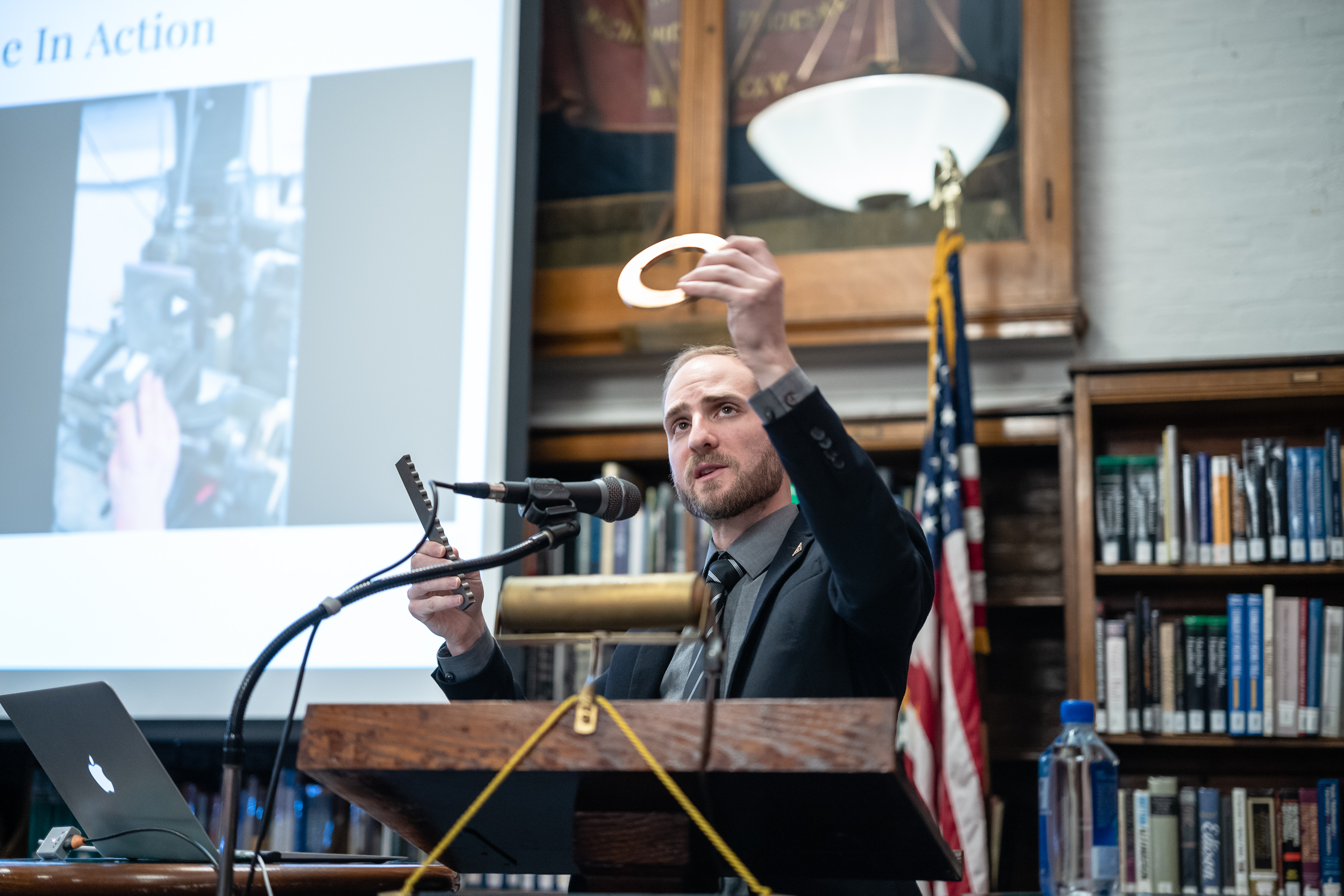
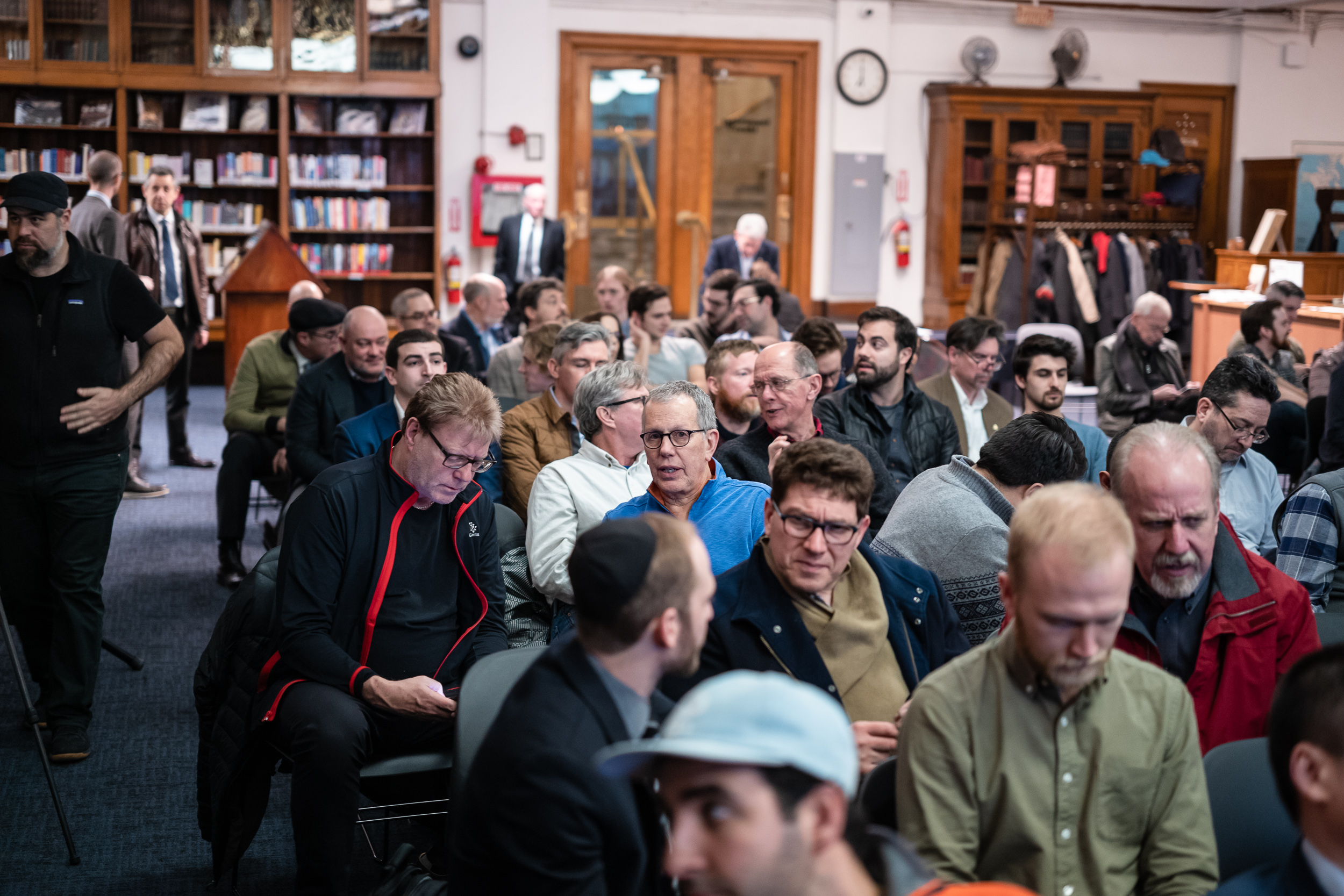

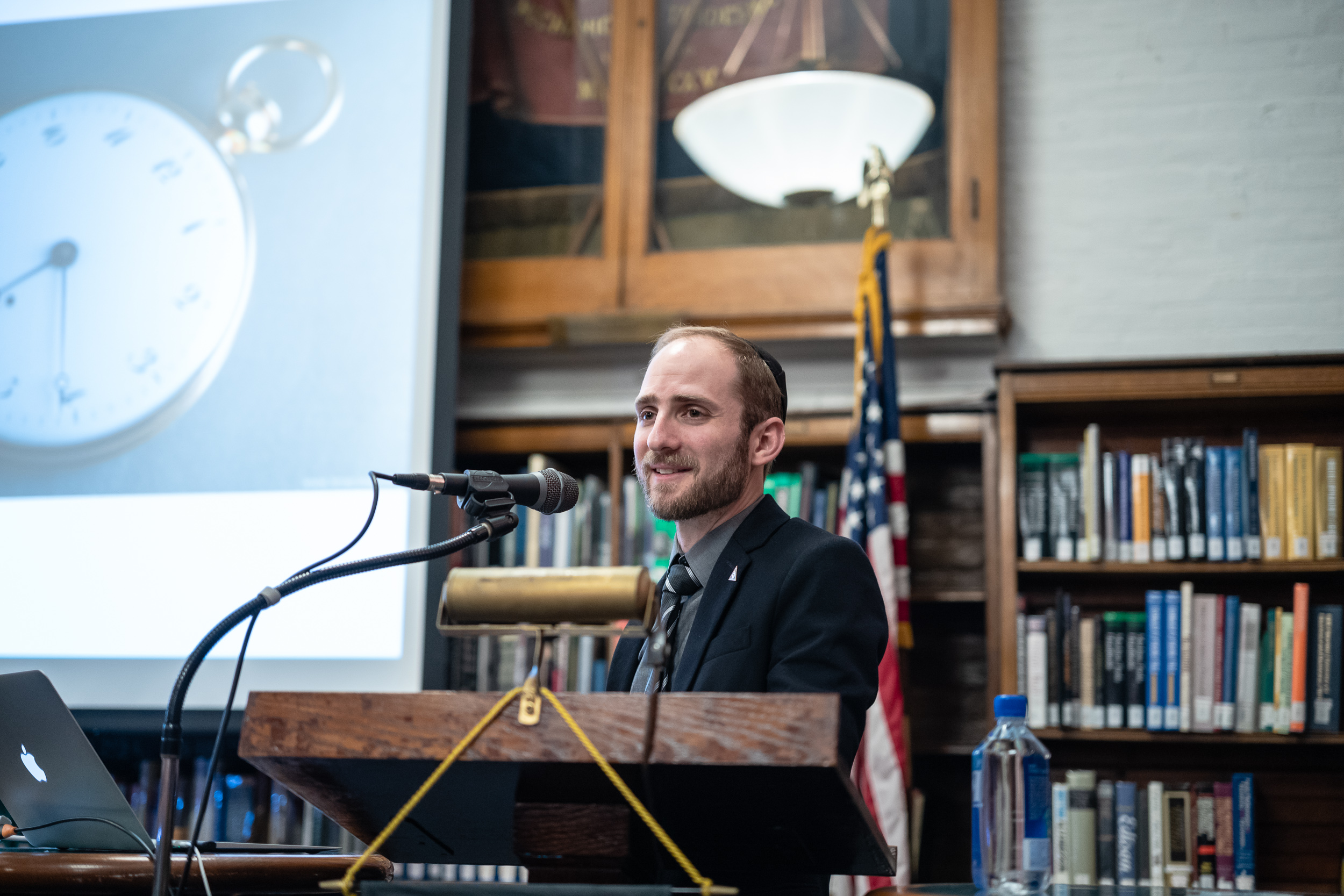
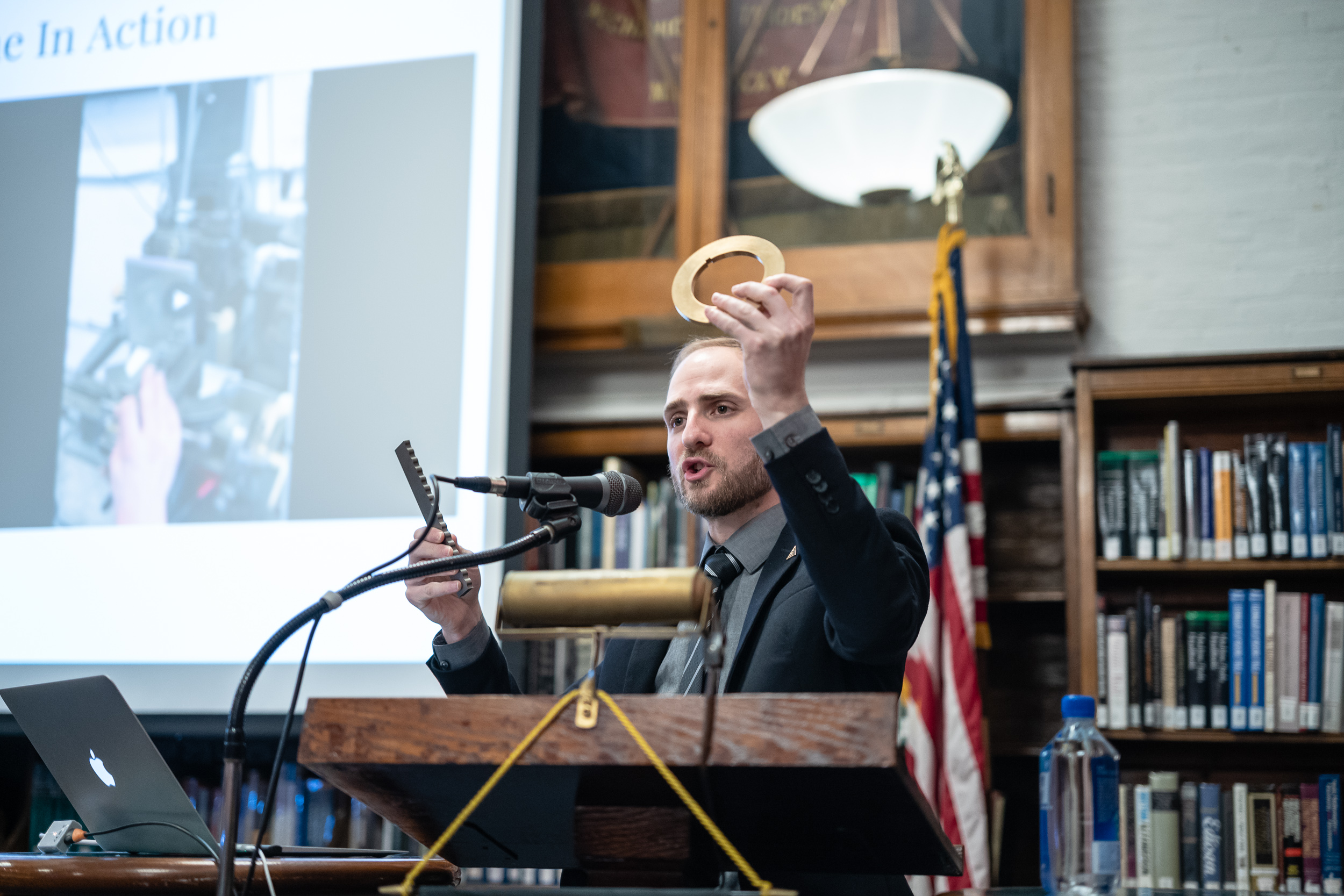
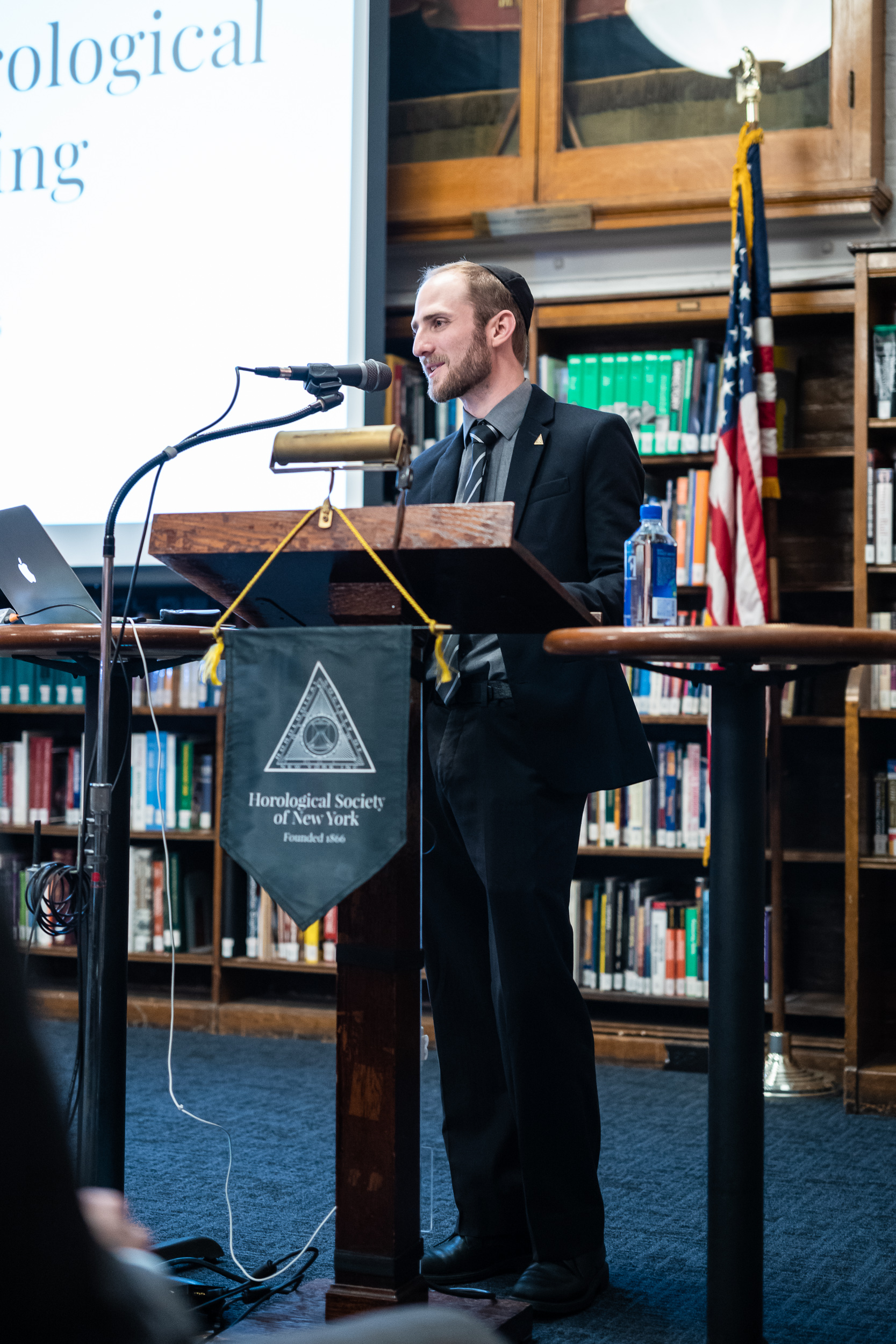

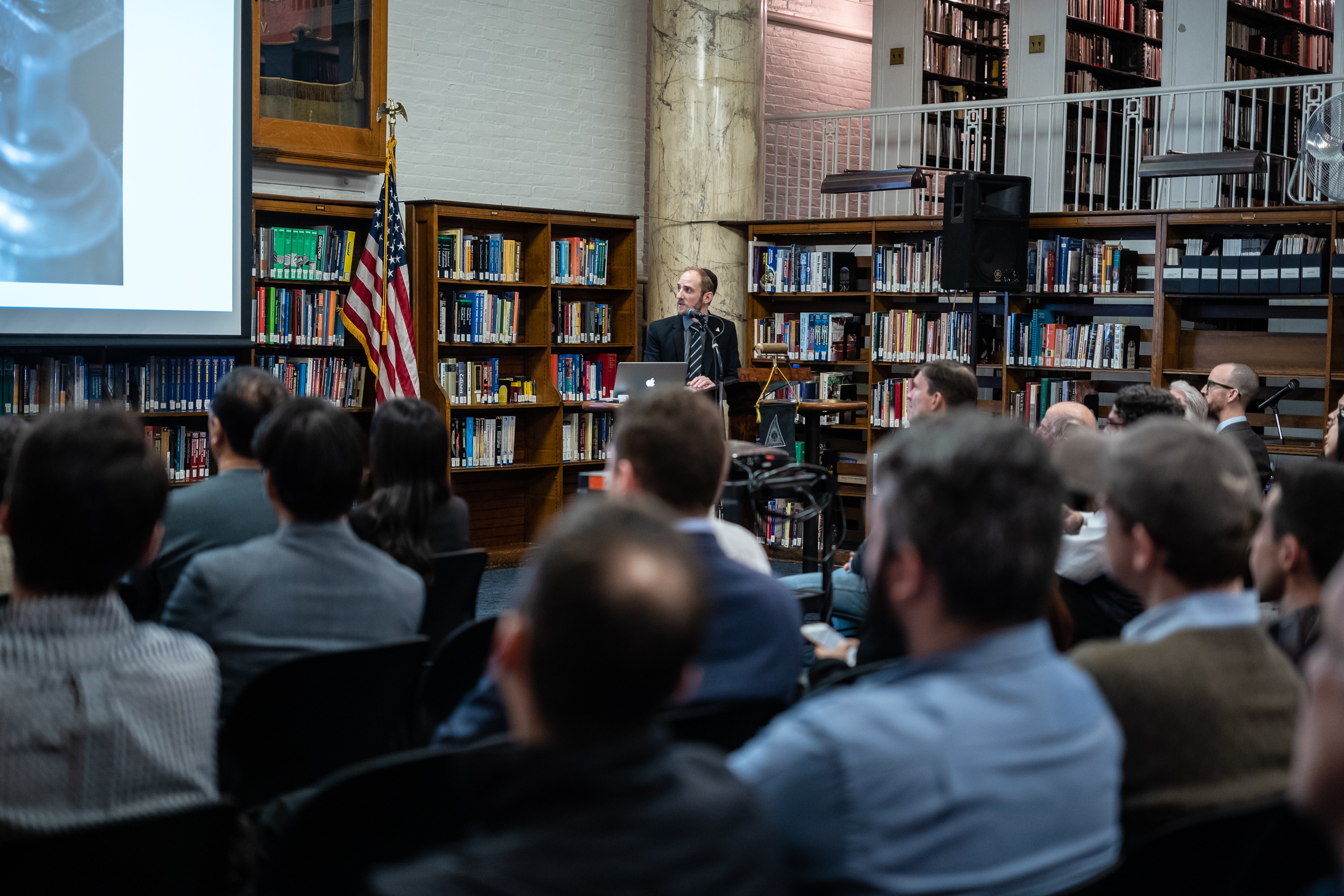
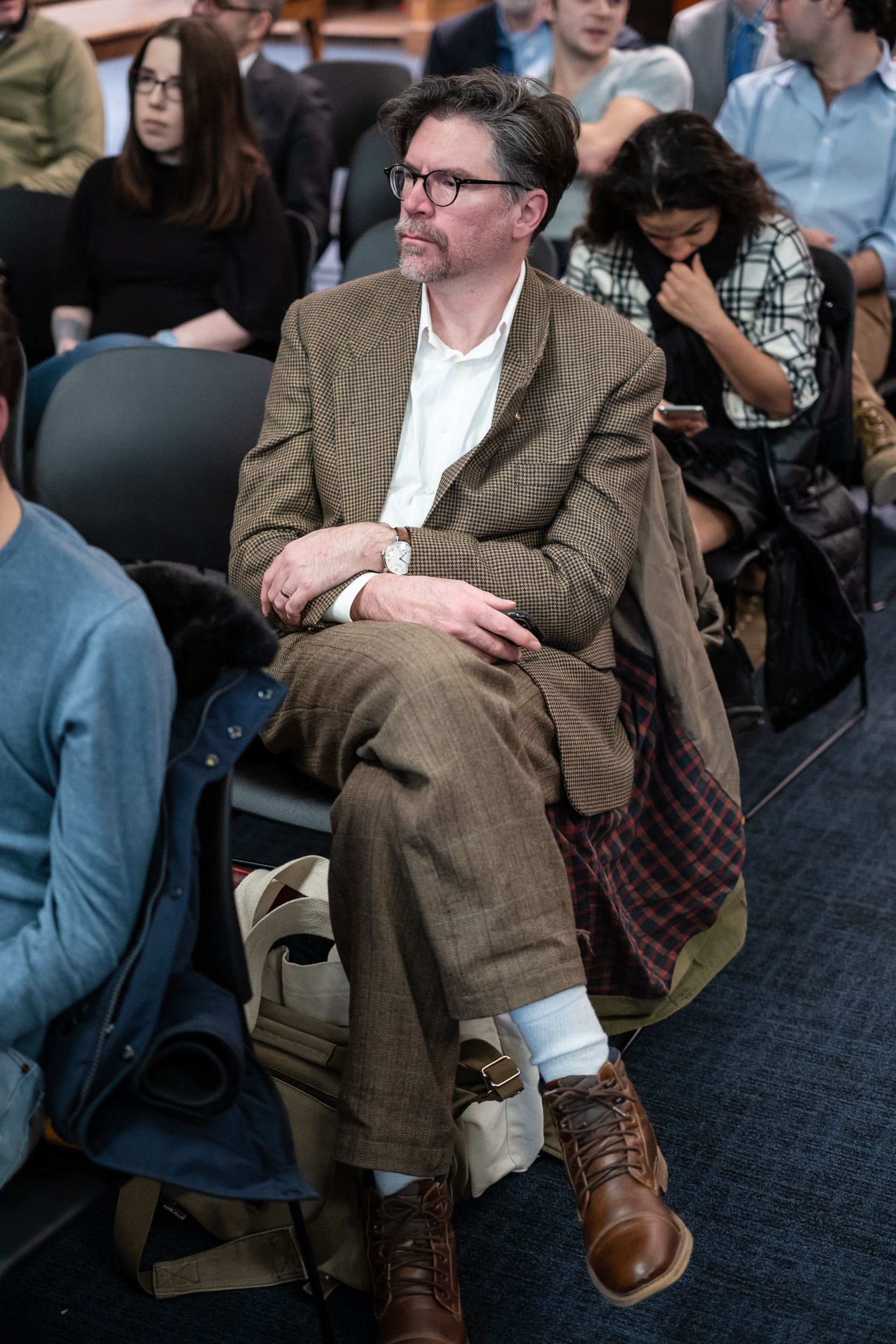
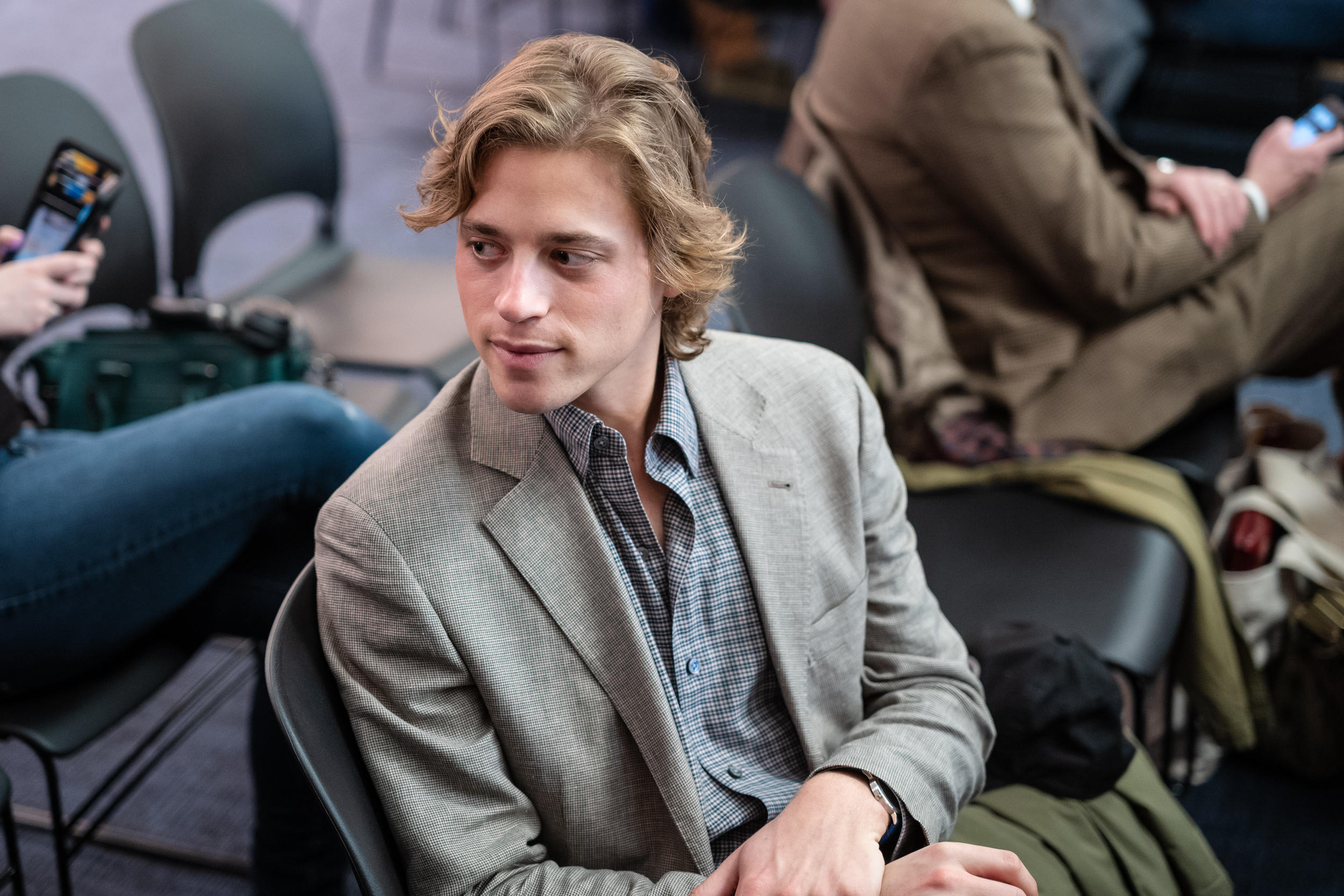
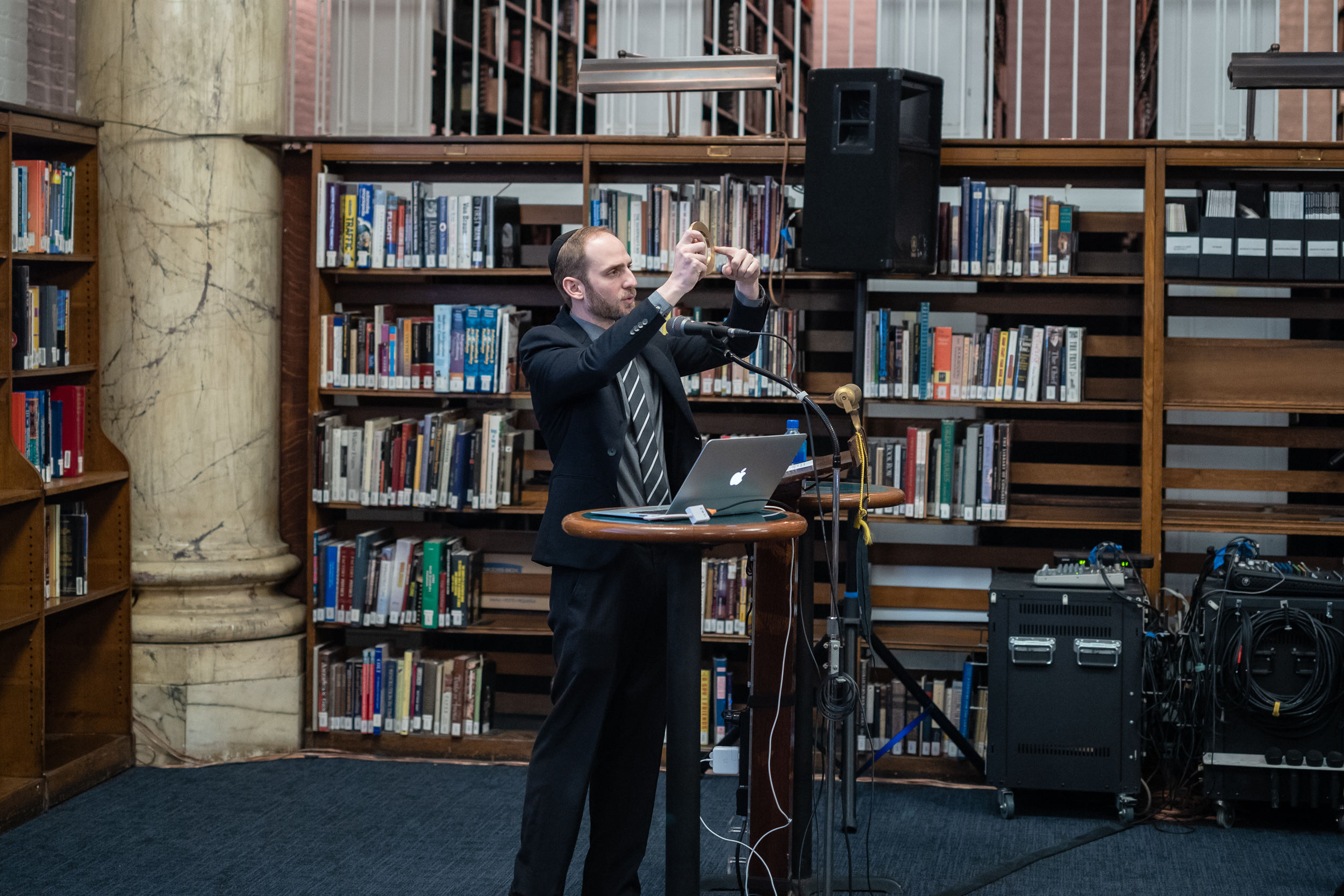
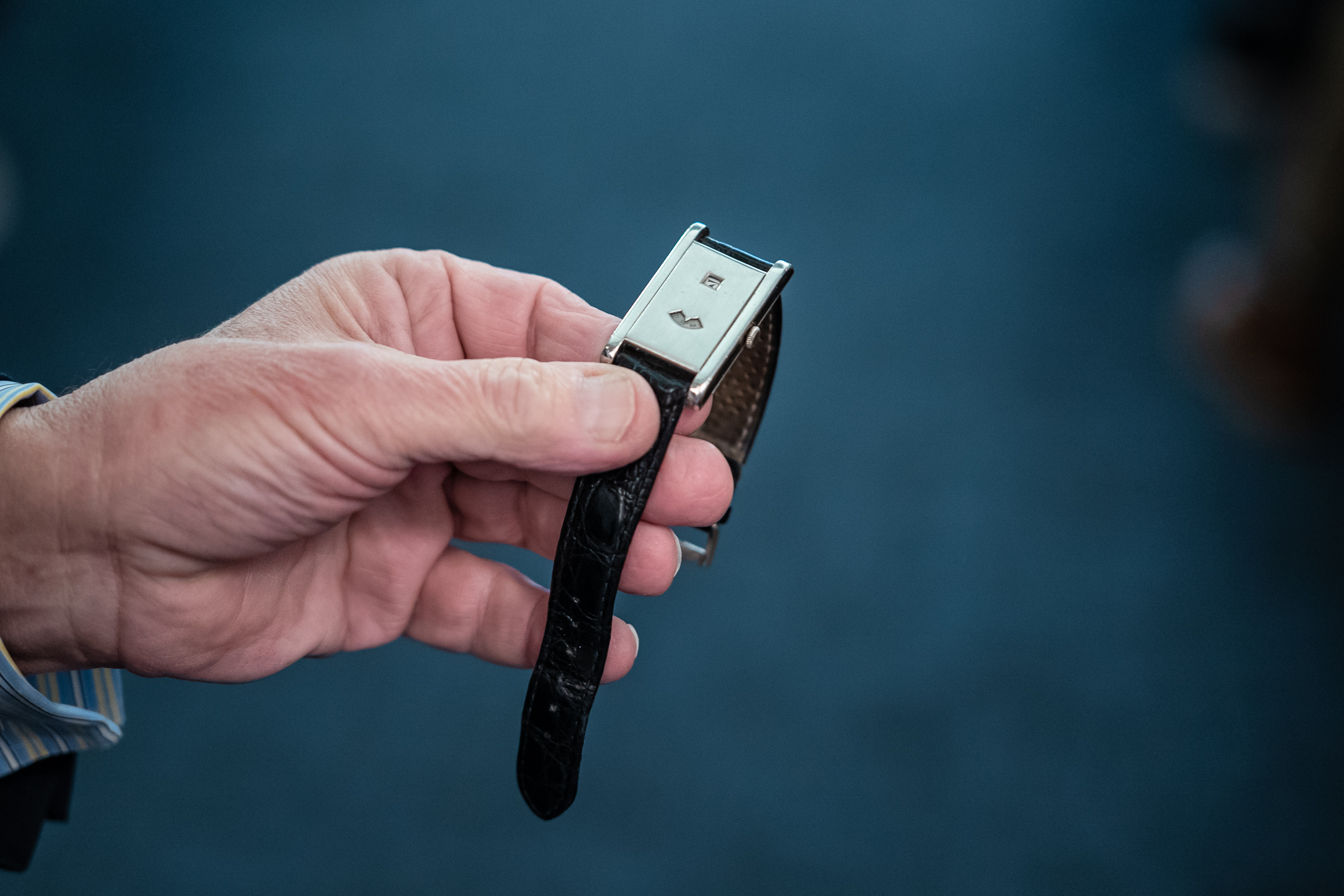
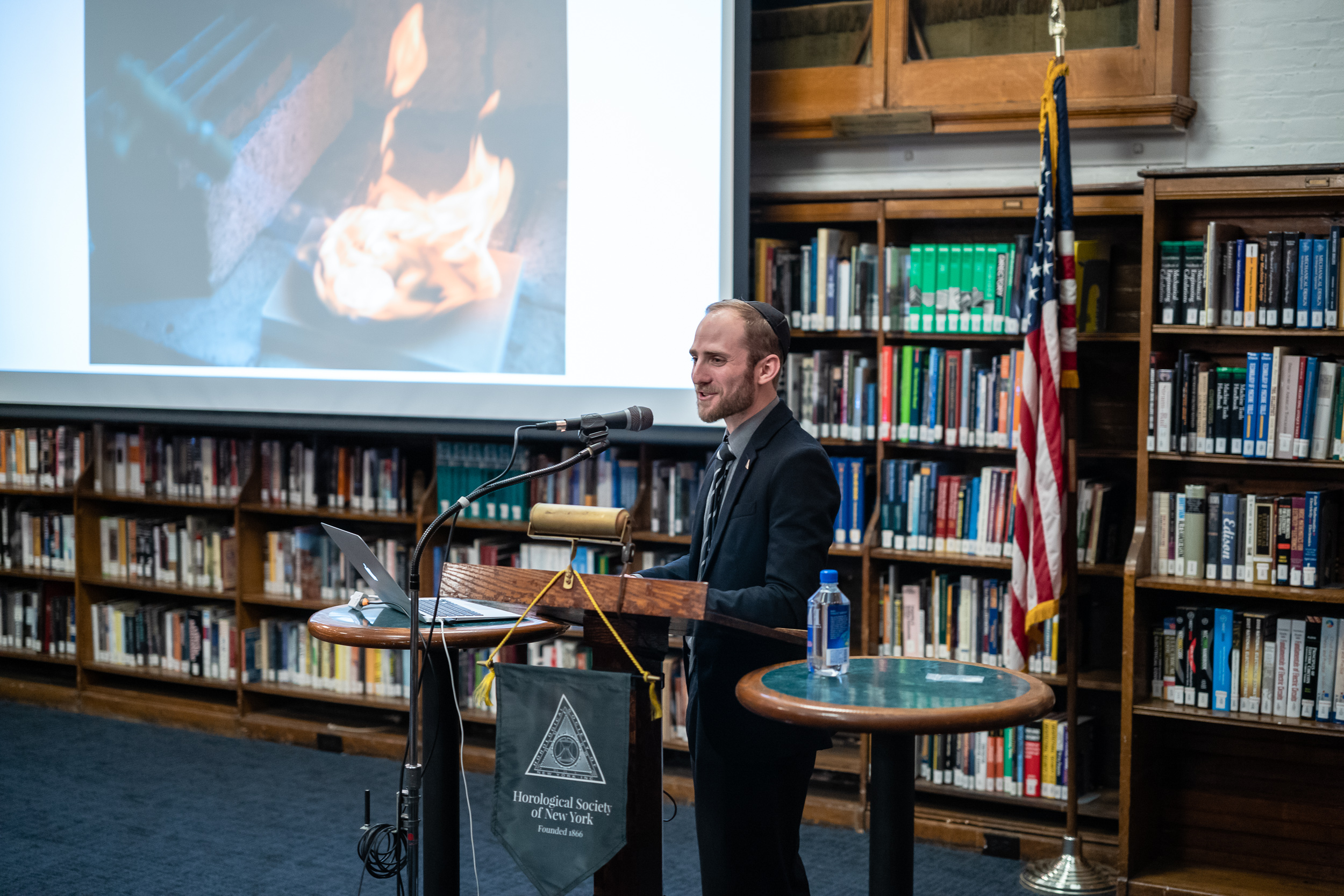
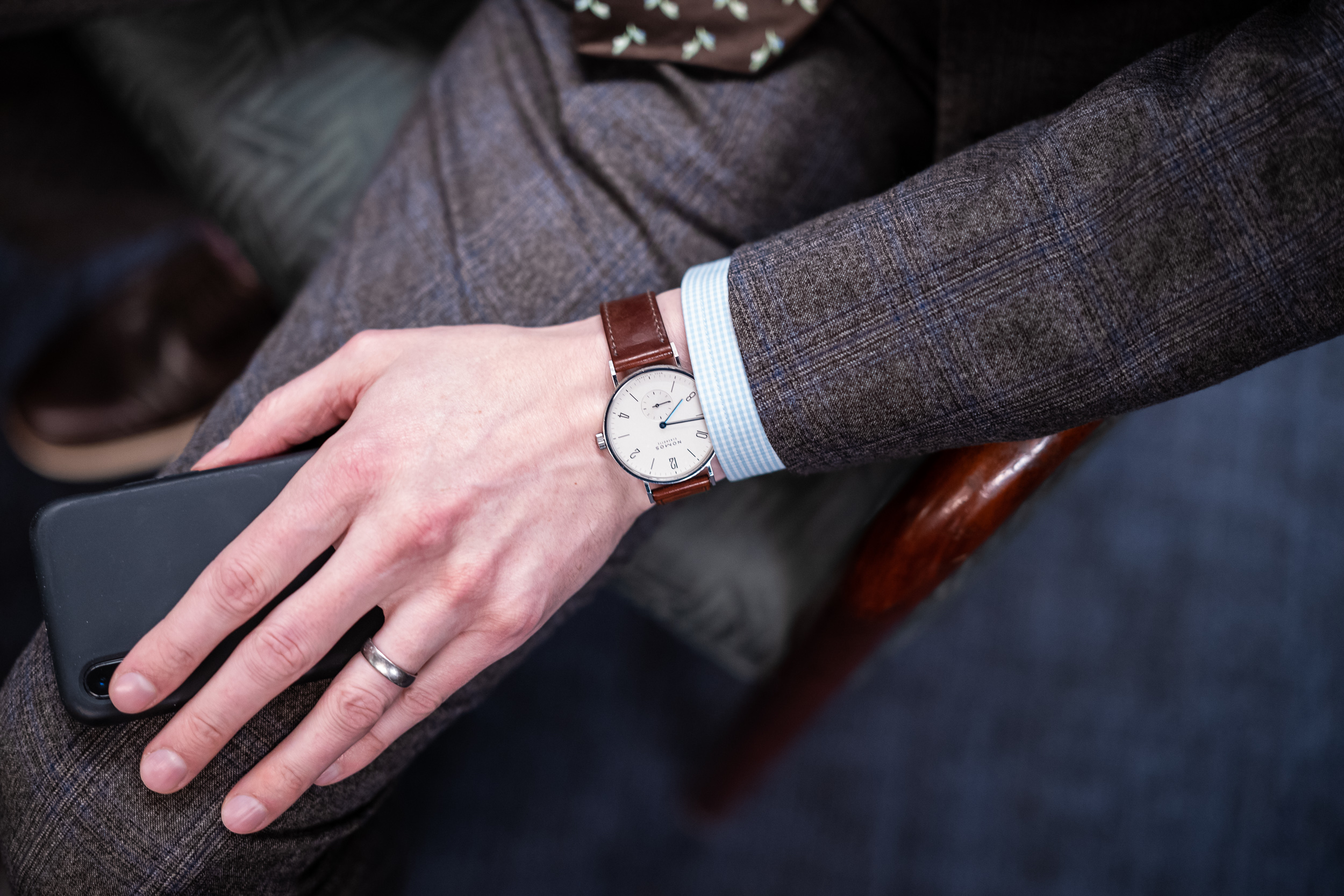
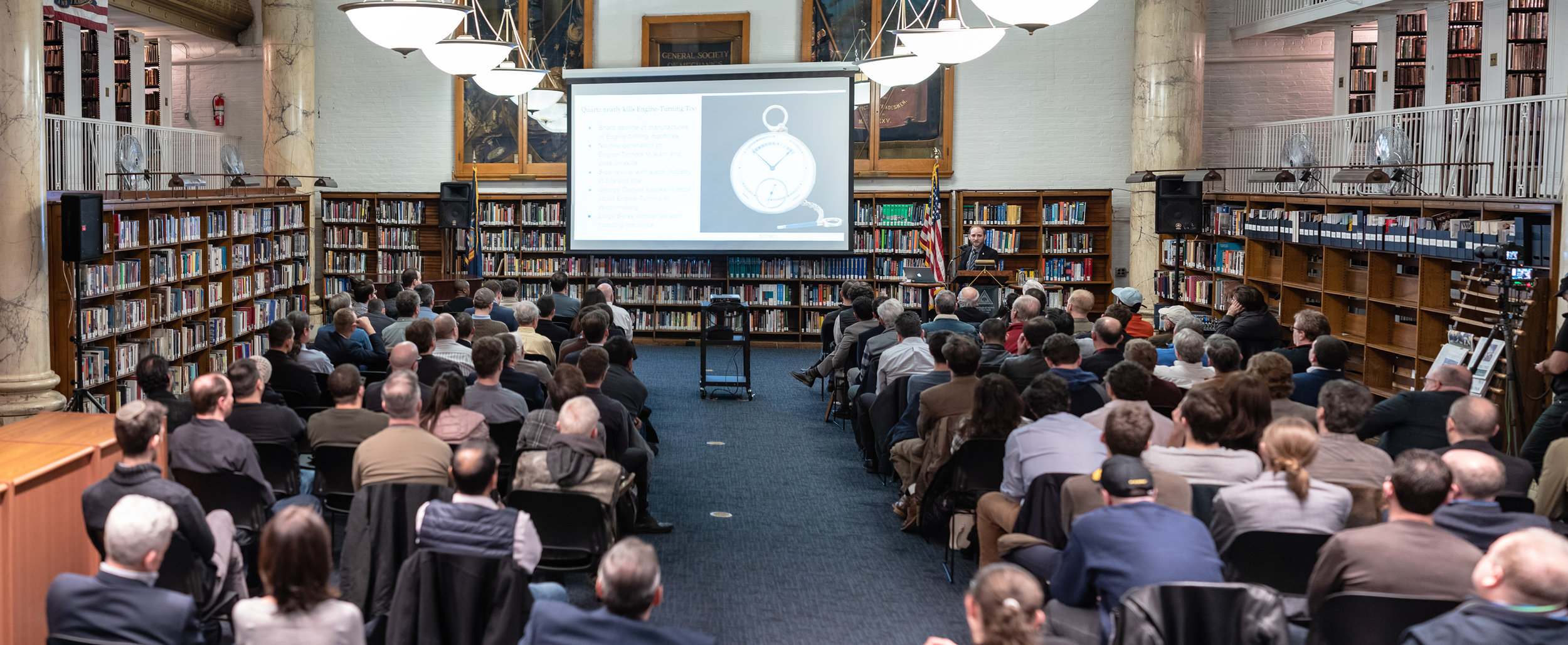
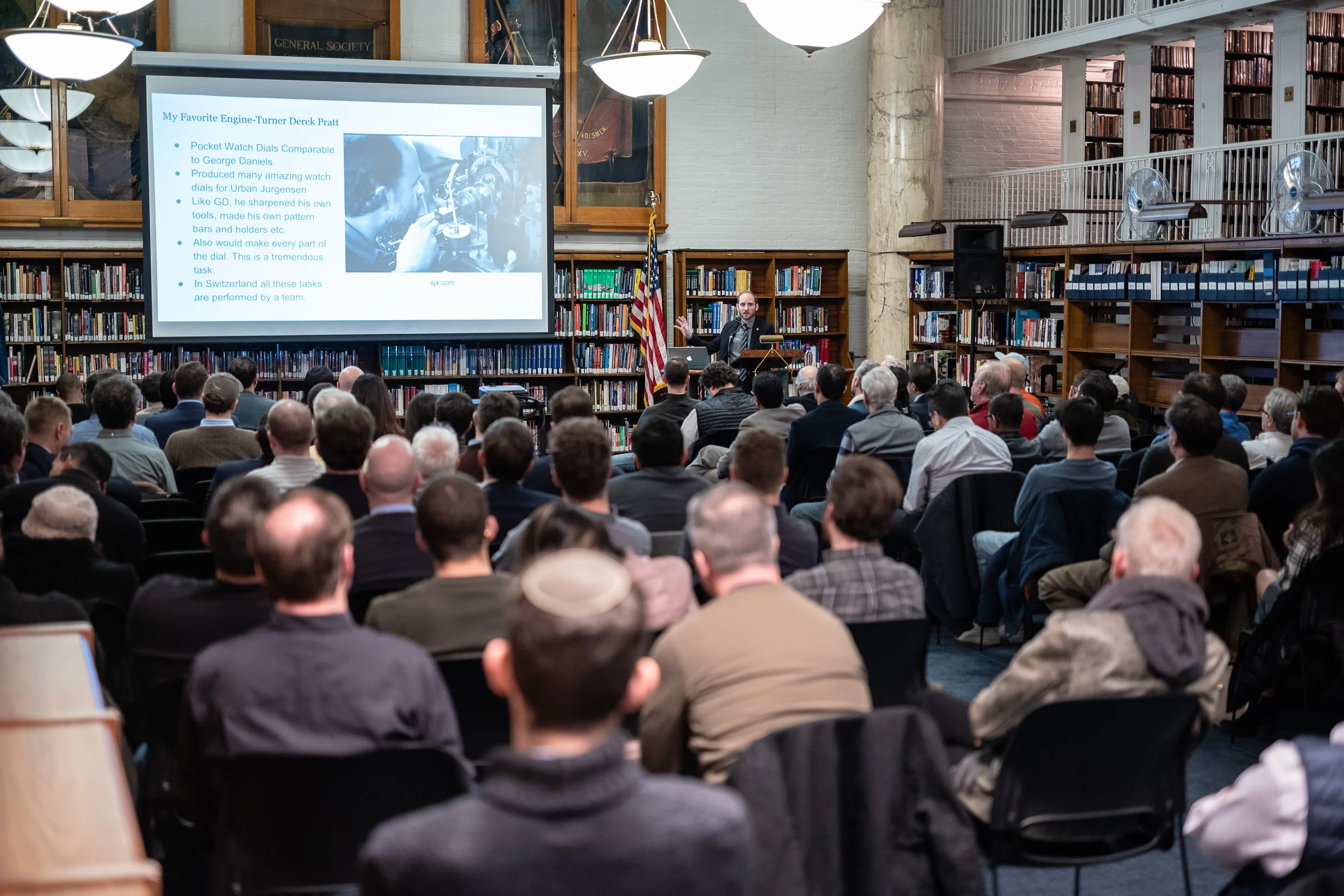
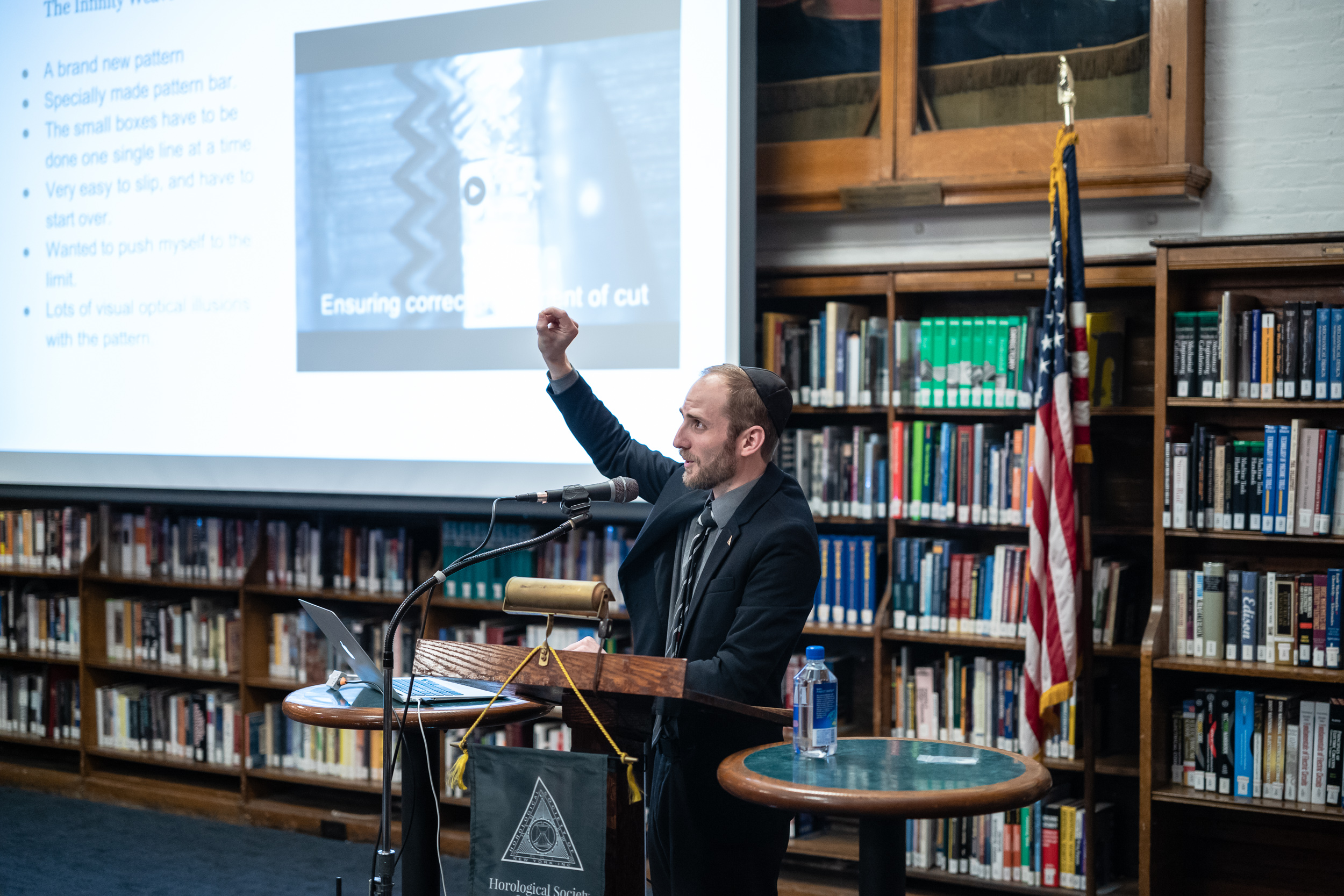
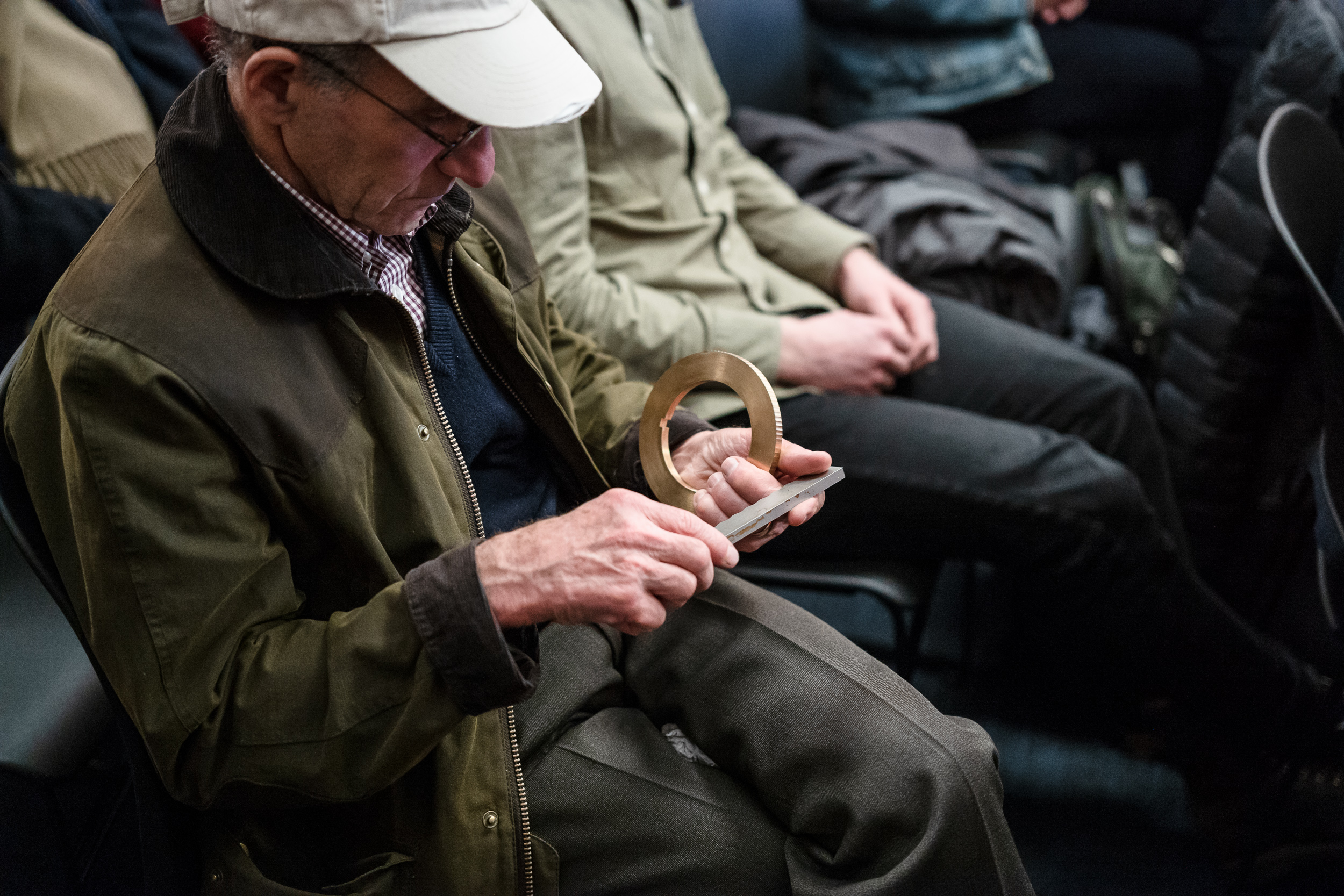
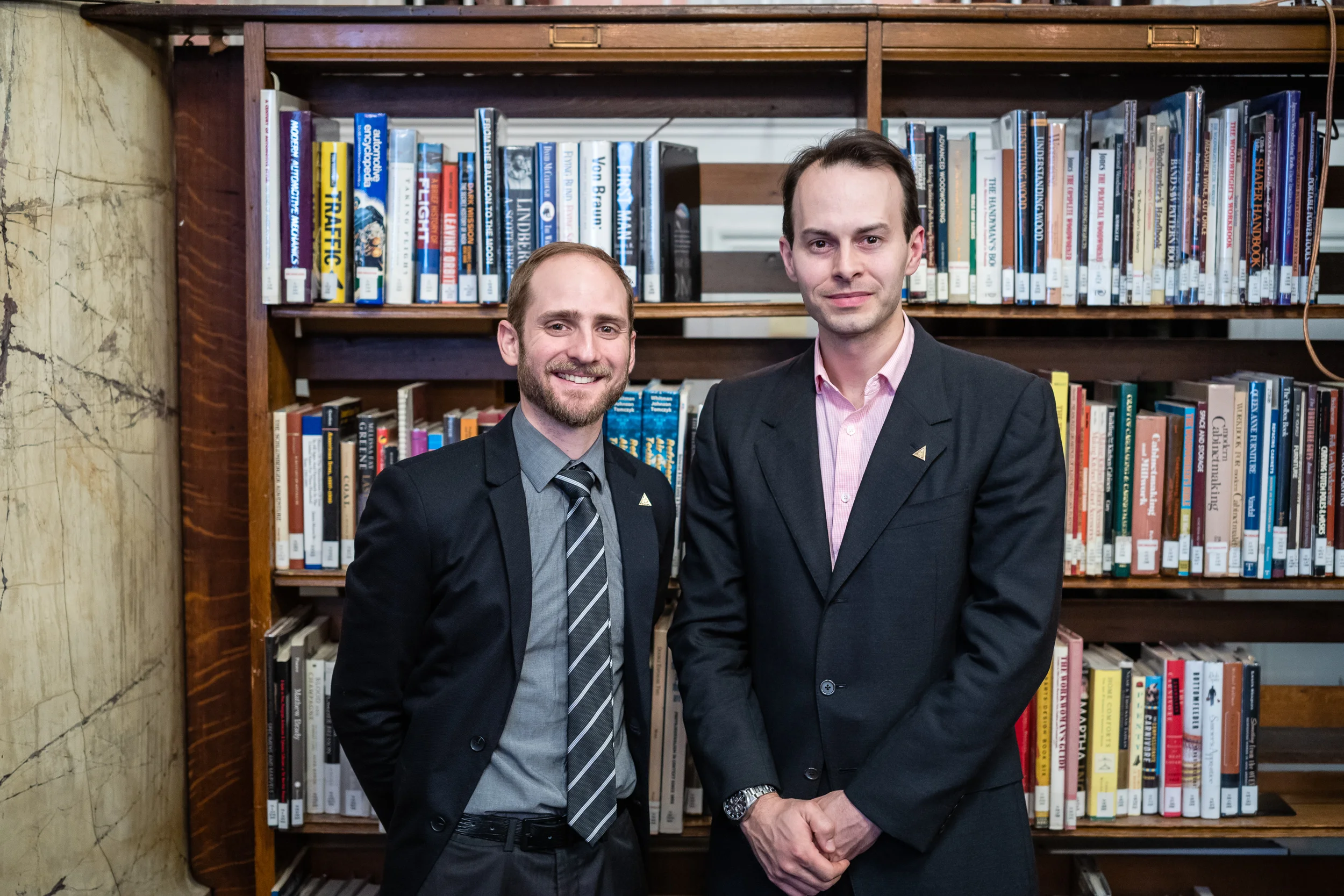
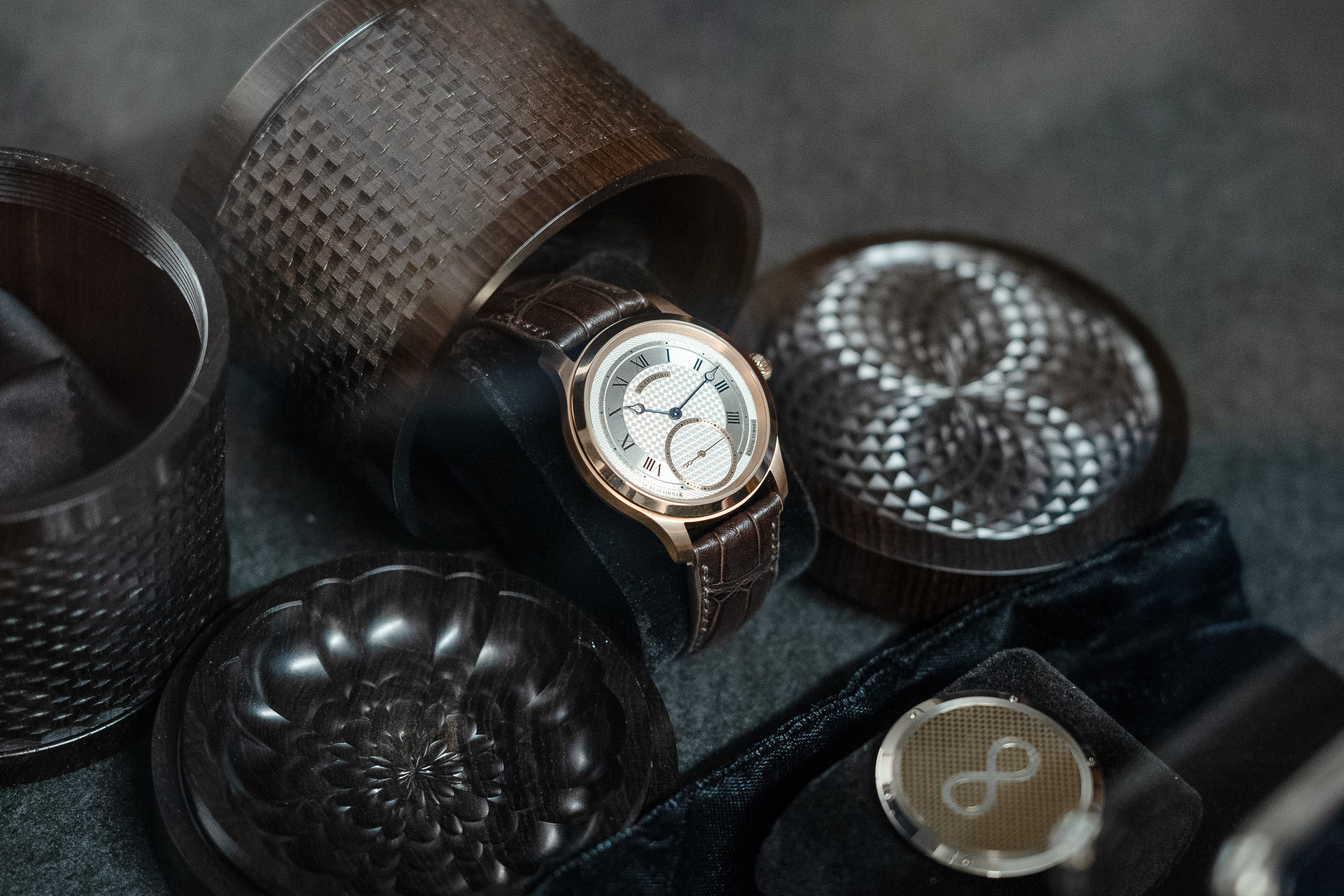
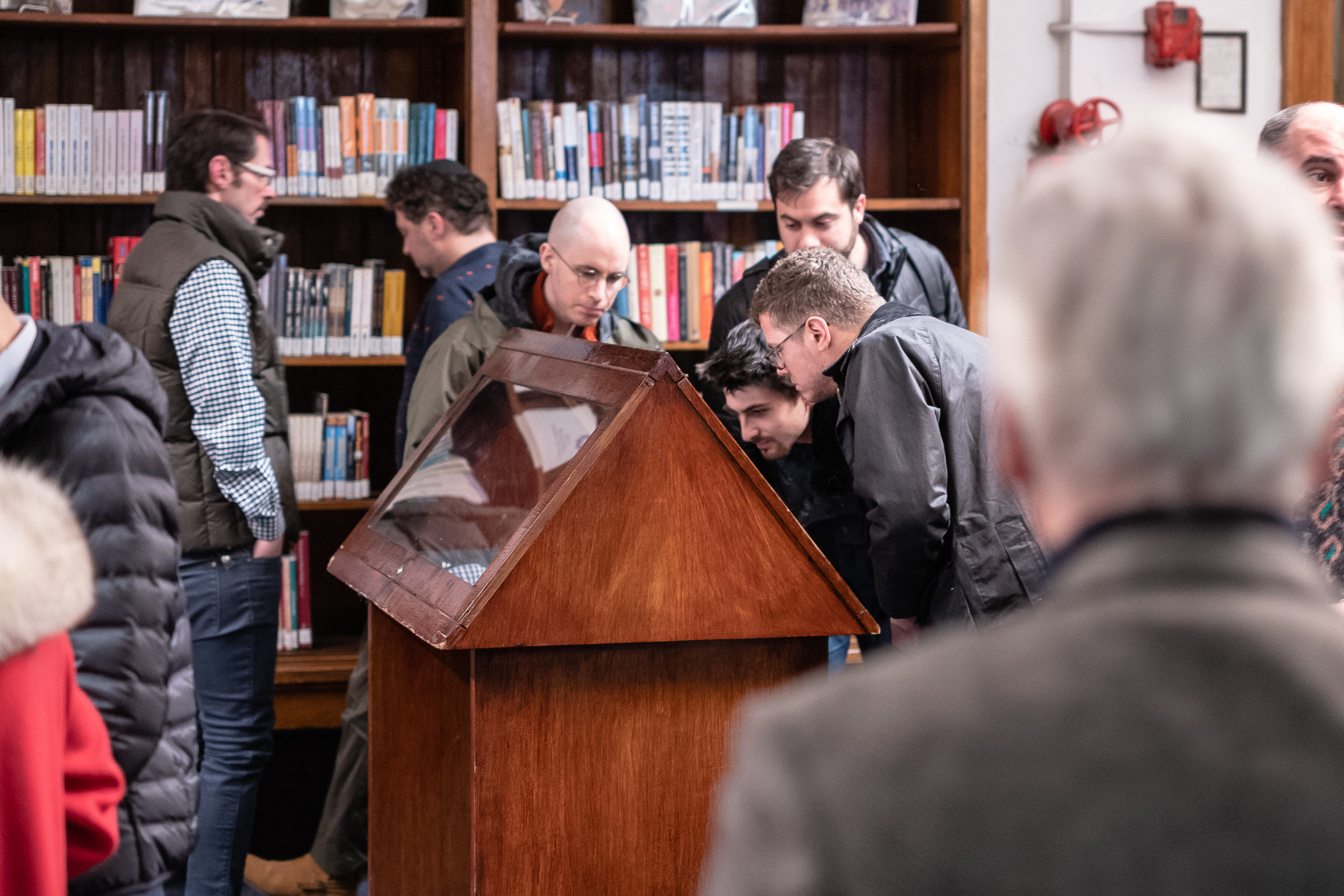
Photography by Atom Moore
Submitted by Melody Benloss, HSNY Librarian & Recording Secretary
Upcoming Event: Xavier Magaldi Exhibits “Temporality” Collection Inspired by Horology (RSVP)
If you’ve visited the HSNY classroom and office you’ve most likely spotted silkscreen prints by Xavier Magaldi. Now, the Swiss artist is back in New York and exhibiting his “Temporality” collection at BOCCARA ART Brooklyn.
On Thursday, February 28, 2019, the gallery will host a reception to exhibit Magaldi's artwork, an alumnus of the École d'horlogerie de Genève, whose inspiration stems from the geometric forms of horology juxtaposed with the free-flowing graffiti style.
Through “Temporality”, Magaldi showcases steel sculptures that almost supersize the inner workings hidden on our wrists.
Art (and horology) enthusiasts can RSVP to the opening reception taking place from 6PM - 9PM by clicking here.
For more information on BOCCARA ART Brooklyn, visit https://boccara-art.com.
To learn more about artist Xavier Magaldi, visit https://xaviermagaldi.com.
Update: This exhibition will now be on view through April 6, 2019.
Images courtesy of https://xaviermagaldi.com and BOCCARA ART Brooklyn
Tickets Now Available for the Horological Society of New York 2019 Gala & Charity Auction
The Horological Society of New York (HSNY), America’s oldest watchmaking guild, founded in 1866, invites watch enthusiasts to celebrate 153 years of tradition at the 2019 Gala & Charity Auction on Wednesday, April 17, 2019. For the first time, HSNY’s biggest night of the year will be held at the Manhattan Penthouse, an exceptional event venue boasting panoramic views of the New York City skyline.
Manhattan Penthouse
Members and guests will toast to the year’s accomplishments and advancements in the field of horology. At the Gala, the Howard Fass Award will be presented, which is given to individuals judged to have shown extraordinary dedication to the ideals which the Society pursues. In addition, the Henry B. Fried Scholarship recipients will be announced. For 2019, HSNY will award multiple Henry B. Fried Scholarship of $10,000 each, designed to assist students at full-time watchmaking schools in the United States.
The celebration will continue with a charity auction presented by Christie’s. This year’s coveted auction lots will include exquisite watches, rare horological ephemera and one-of-a-kind experiences including an all-expense-paid trip to Switzerland.
In classic HSNY fashion, the business formal evening will also feature a cocktail reception with hors d’oeuvres, a gourmet dinner with premium open bar and live music - all adorned with a backdrop of the Manhattan night sky.
Tickets to the Horological Society of New York 2019 Gala & Charity Auction are priced at $200 per person and can be purchased by visiting this link. Limited tables seating 10 guests each are priced at $1,500. Manhattan Penthouse is located at 80 Fifth Avenue at 14th Street, one block west of Union Square.
All proceeds from the charity auction go towards the Horological Society of New York's ongoing educational programs. The Horological Society of New York is a registered 501(c)(3) non-profit organization, federal tax identification number 13-6139887.
Follow the Horological Society of New York on social media for the latest Gala & Charity Auction announcements including auction lot details and attending sponsors.
HSNY Welcomes Grand Seiko as a Sponsor
New York City - January 22, 2019
Furthering the Horological Society of New York’s (HSNY) educational mission, Japanese watch manufacture Grand Seiko has joined as a sponsor. Grand Seiko’s generous support will enhance HSNY’s 153-year-old monthly lecture series, horological education classes in the New York City classroom and abroad, watchmaking scholarships, and extensive horological library with precious texts.
“For Grand Seiko, takumi is not simply a way of showing respect for tradition, but it is also an embodiment of that tradition,” said Grand Seiko Corporation of America President Brice Le Troadec. “For this, Grand Seiko is proud to support the Horological Society of New York, an organization dedicated to advancing the art and science of horology for over a century. With our common goal, we are excited to share the Grand Seiko legacy of craftsmanship and technology with the public through this partnership.”
“We are delighted to welcome Grand Seiko as a sponsor of the Horological Society of New York,” said Nicholas Manousos, President of HSNY. “Grand Seiko is one of the world’s very few fully integrated watch manufactures, and with that comes a dedication to education on every level of watch manufacturing, design and assembly. Since 1960, Grand Seiko watches have exemplified precision and design alongside traditional Japanese craftsmanship. Grand Seiko’s generous support of our educational mission is inspiring, and will greatly aid the Horological Society of New York in promoting horological education worldwide.”
About Grand Seiko
Born in 1960, Grand Seiko has long had a loyal following in Japan as a leading luxury watch. Launched internationally in 2010, Grand Seiko is now available worldwide. Grand Seiko is one of the very few fully integrated watchmakers in the world, with complete in-house capabilities in every area of watchmaking, from the development of component materials through design and manufacture to assembly and adjustment. Every Grand Seiko watch is assembled and adjusted by hand by highly skilled craftsmen and women in two dedicated studios in Japan. From the very start, Grand Seiko has concentrated on the pure essentials of watchmaking; every Grand Seiko watch offers the very highest levels of precision, legibility, durability and ease-of-use. With a simple purity of design, the highest level of hand craftsmanship in every detail and a strong Japanese aesthetic, all Grand Seiko watches have a special and unique beauty that is the brand’s distinctive hallmark. Winner of many awards, including a prize at the 2014 Grand Prix d’Horlogerie de Genève, Grand Seiko offers a wide range of designs incorporating exclusive mechanical, Spring Drive and quartz calibers. Official website: www.grand-seiko.com/us-en/
About the Horological Society of New York
Founded in 1866, the Horological Society of New York (HSNY) is one of the oldest continuously operating horological associations in the world. Today, HSNY is a 501(c)(3) nonprofit organization dedicated to advancing the art and science of horology through education. Members are a diverse mix of watchmakers, clockmakers, executives, journalists, auctioneers, historians, salespeople and collectors, reflecting the rich nature of horology in New York City; http://hs-ny.org.
Welcoming New HSNY Members, January 2019
HSNY would like to welcome the following new members. It is with your help that we are able to continue flourishing as America's oldest watchmaking guild, and your commitment to HSNY helps us advance the art and science of horology every day.
HSNY members receive a lapel pin.
Michael Danskin, NY
Joseph JM Redner, FL
Scott Danskin, NJ
Kevin Serapilio, NY
Rob Niccolai, NY
Adam Schoon, PA
Thomas A Gaylor, AL
William Watson Dowtin III, TX
Amy Tam, NJ
Derek Haager, NY
Michael Cafiso, AZ
Click here for membership benefit information and to join HSNY!
Upcoming Lecture: The Secrets of Horological Engine-Turning (Guilloché)
Join HSNY on Monday, February 4, 2019 for a lecture on The Secrets of Horological Engine-Turning (Guilloché), by Joshua Shapiro, Watchmaker and Owner of J.N. Shapiro Watches.
The engine-turning technique (guilloché in French) has produced some of the most mesmerizing dials in the history of clock and watch making. Makers such as Breguet, Daniels, Smith, Voutilainen and Murphy have perpetuated this horological art form to the present day. At the same time, much of the history of engine-turning is little-known. At the February 4, 2019, meeting of the Horological Society of New York, Joshua Shapiro will discuss the history and technique of engine-turning.
Shapiro's lecture will delve into the mysteries of engine-turning, beginning with an in-depth look at exactly how engine-turning is done and the differences between the three different types of engine-turning machines. The history of engine-turning will be discussed, as well as the differences between modern and traditional techniques. The lecture will also feature video of engine-turning through a microscope, giving attendees an engine-turning experience from a rarely seen perspective.
READ THE FULL STORY HERE!
HSNY Kicks off 2019 Traveling Education in San Diego & Chicago
After a wildly successful year of Traveling Education, the Horological Society of New York (HSNY) announces today the launch of its 2019 courses, commencing in San Diego and Chicago.
Watch enthusiasts will get a taste of what it’s like to be a watchmaker with stops in San Diego, hosted by Passion Fine Jewelry on February 2-3, following a Midwest visit to Chicago’s Oak & Oscar on February 16-17.
The 153-year-old Society, whose mission is to advance the art and science of horology, will revisit both cities - and hosts - backed by popular demand.
Each Traveling Education course is taught by HSNY expert watchmakers who work one-on-one with students and cover material from Horology 101-103 classes taught weekly in New York City. During a four-hour course, students will have the opportunity to disassemble and reassemble a complete ETA 6497 mechanical movement and gain a comprehensive understanding of modern horology. No previous experience is required to take this course.
Last year, HSNY’s Traveling Education made stops throughout the United States and launched an International Traveling Education program which received rave reviews from attendees in Toronto, Canada and Singapore.
For tickets, please visit HSNY’s Eventbrite page for a breakdown of dates and times. Ticket sales are reinvested directly back into HSNY’s ongoing educational mission.
Meeting Recap: Screening of George Daniels’ Lecture on the Co-Axial Escapement to the American Watchmakers-Clockmakers Institute (AWCI), 1990
Video recordings of lectures are available to members immediately (using your membership password), and the general public with a 2 month delay.
At the 30th Anniversary of the American Watchmakers Institute (AWI), later to be known as the American Watchmakers-Clockmakers Institute (AWCI), the audience was treated to a lecture from one of the legends in watchmaking, George Daniels. Henry B. Fried (former President of HSNY) introduced Daniels not only as the first recipient of the Henry B. Fried award, but also as “the man of the century”.
In 1990, Daniels volunteered to attend the AWI’s anniversary; he wanted to be there to give the lecture in honor of his friend, Henry Fried. As far as Daniels was concerned, Fried is “the dean of American horology”.
Within the lecture, Daniels’ humility, sense of humor, skill and artistic abilities are displayed throughout.
Here are few highlights from the lecture:
In 1967, Daniels was incensed on the attention given to the quartz watch and the quartz’s dependence on a battery, “…it’s the dedication and ambition of every battery to commit suicide as soon as possible”.
One of the reasons for making his watch was to re-establish the mechanical “…reputation to the public eye after the adulation of the quartz makers”.
Daniels took inspiration from a Bugatti motor clutch for the brake drum in his first watch. As Daniels stated, “…and when the remontoire goes off the flyer, it opens up and jams the shoes on the brake drum and maintains a steady speed”.
Daniels comes to terms with his shortcomings with regulation by stating that, “Regulating watches is a complex science.” And to his credit, he purchased hairsprings from Hamilton due to the challenge of making his own.
One of the surprises in the lecture was Daniels’ artistic abilities in presenting short films of animated cardboard cutouts of the lever escapement and détente escapement to illustrate oscillation/friction differences. Daniels’ goal was to make an escapement more adaptable to modern watches.
Then there was his experience in Switzerland when he showed his escapement to the Swiss. One of the criticisms Daniels had of the Swiss watch industry was “…it provoked the industry, and the Swiss industry, which is a very important industry, and it would be rather nice to provoke them to do something, think of some other way about their affairs and not just stay in business making watches for money and to hell with the development of it”.
Daniels concluded the lecture that was alluded to in the beginning of the lecture, “A good watch has historic, intellectual, technical, aesthetic, useful and amusing qualities.”
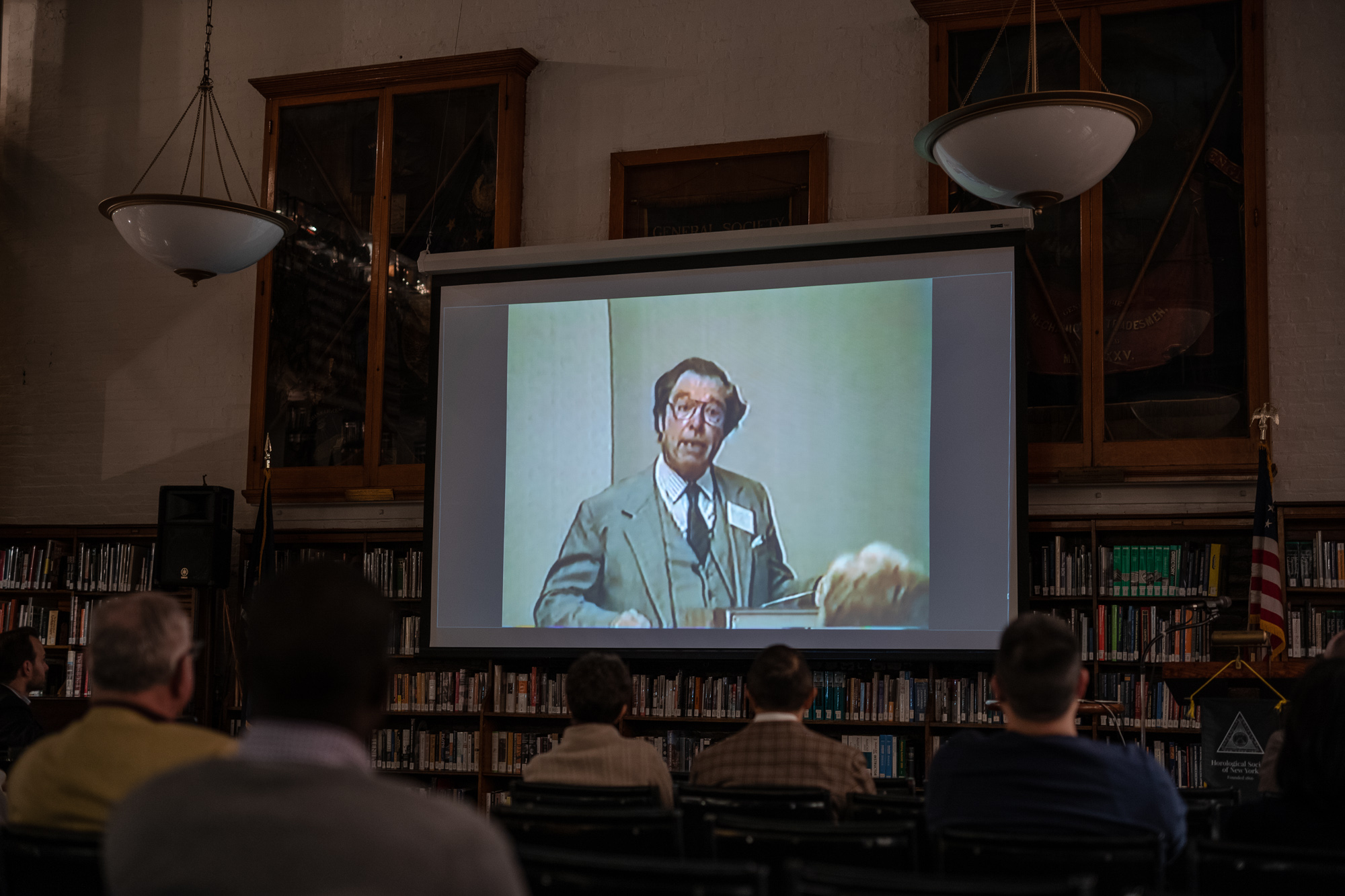
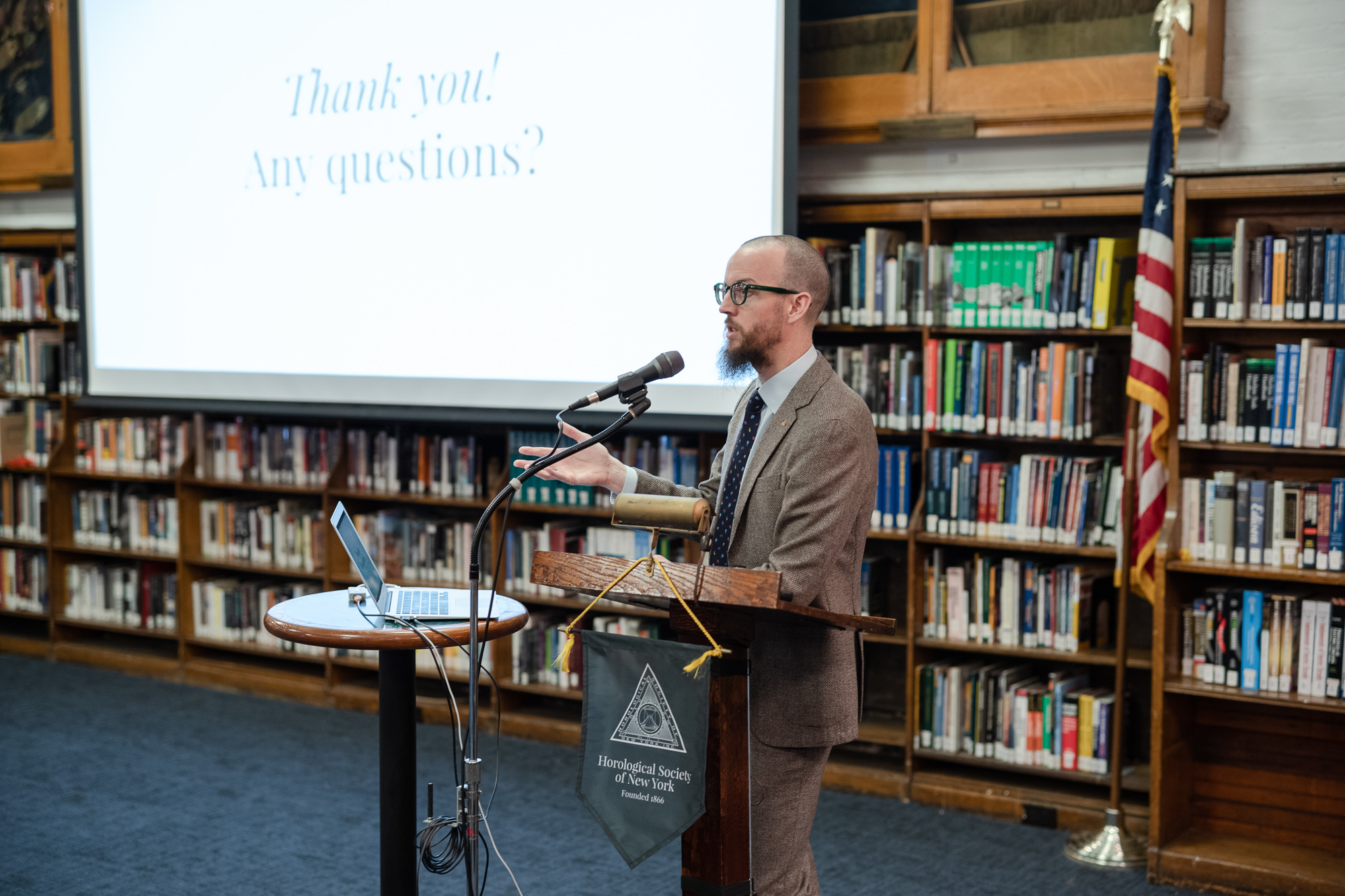
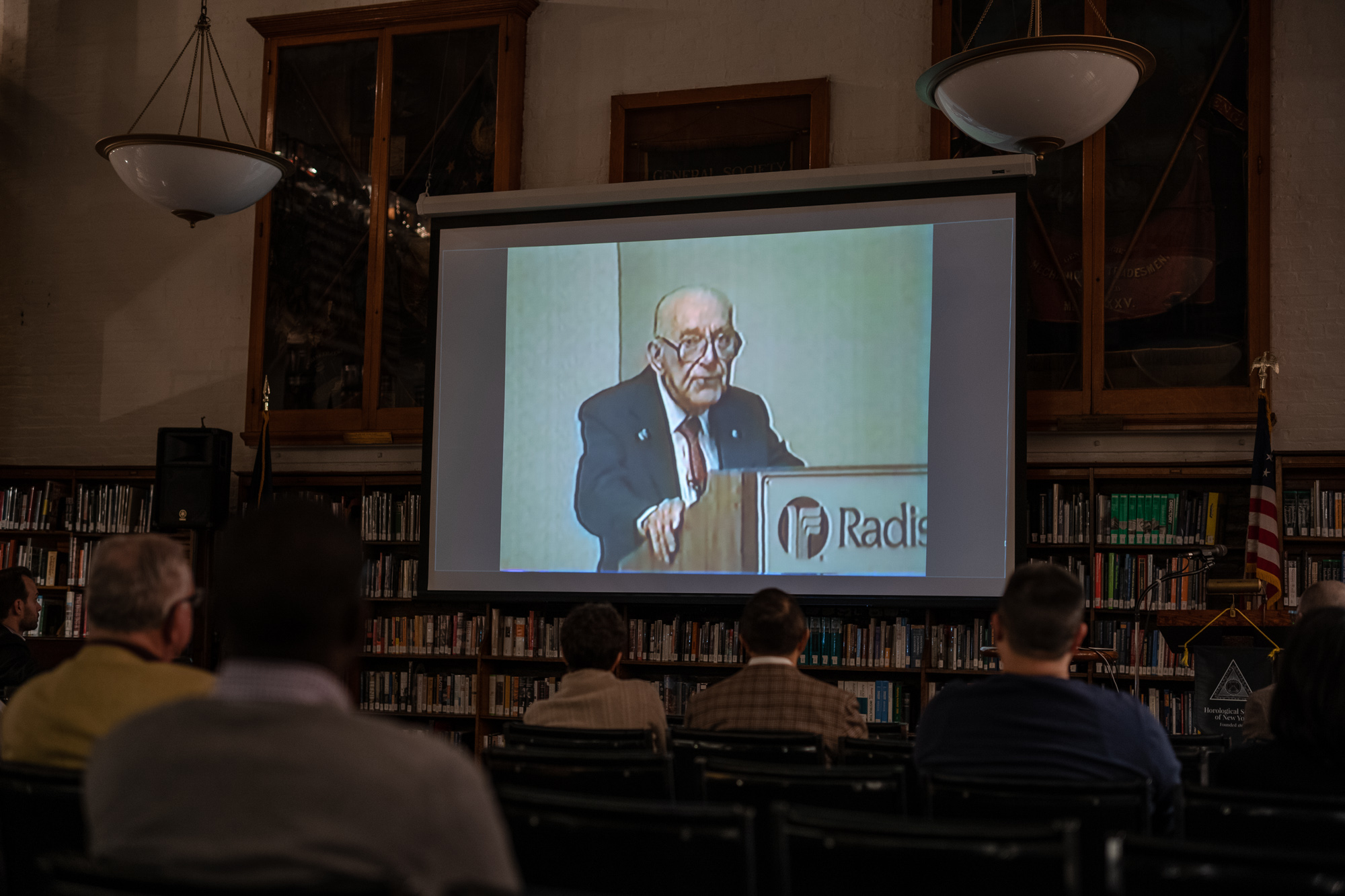
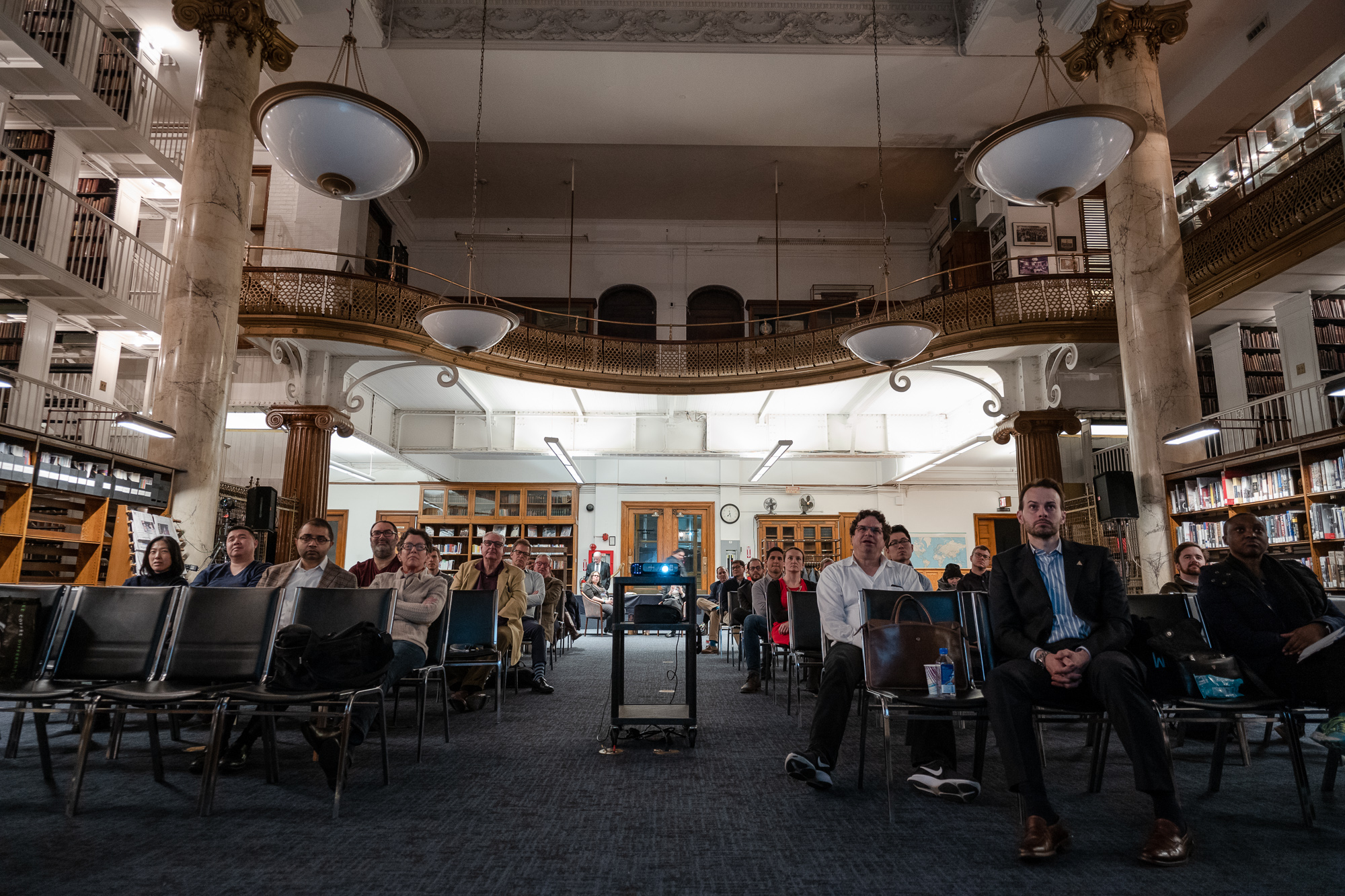
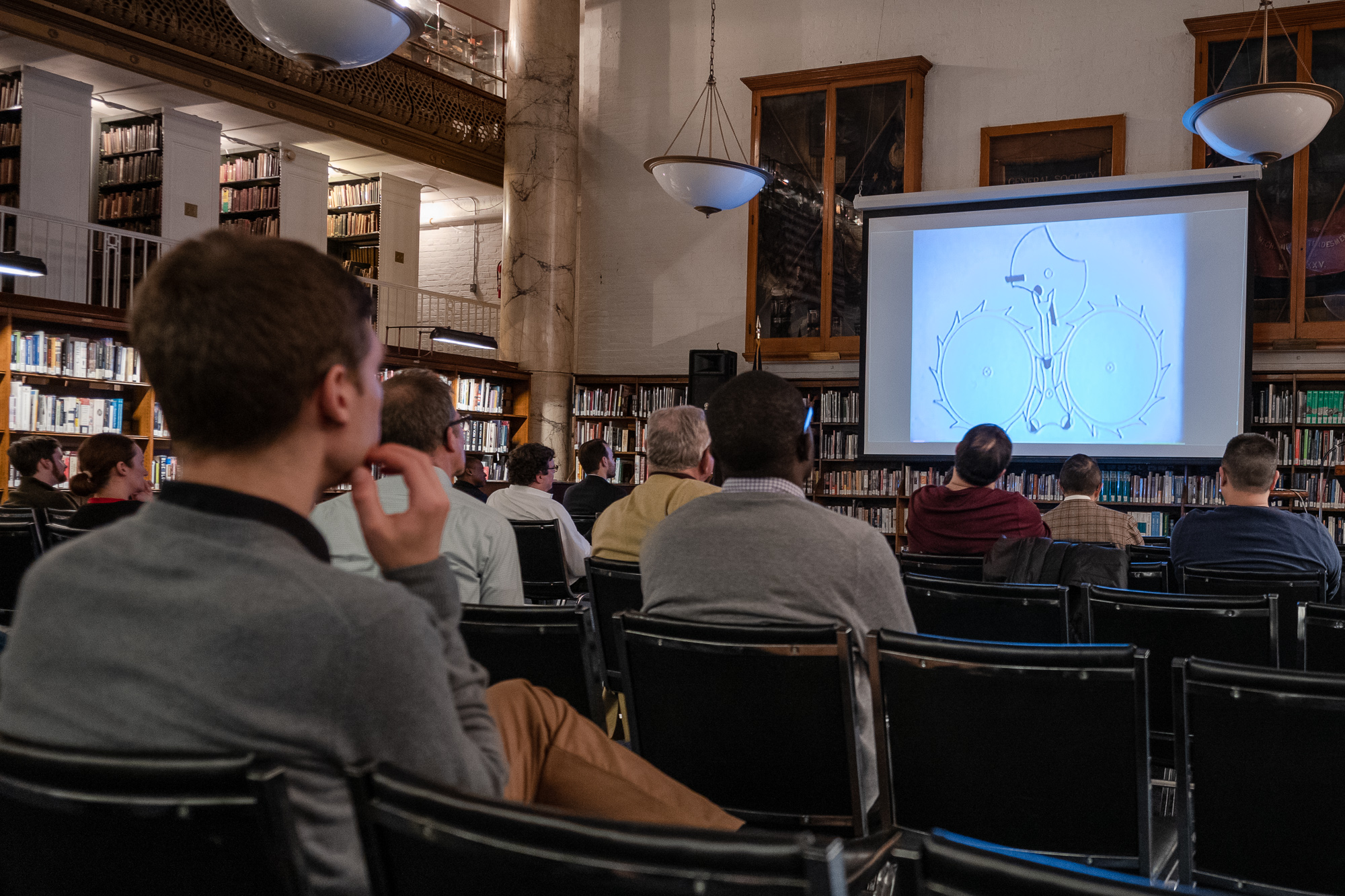
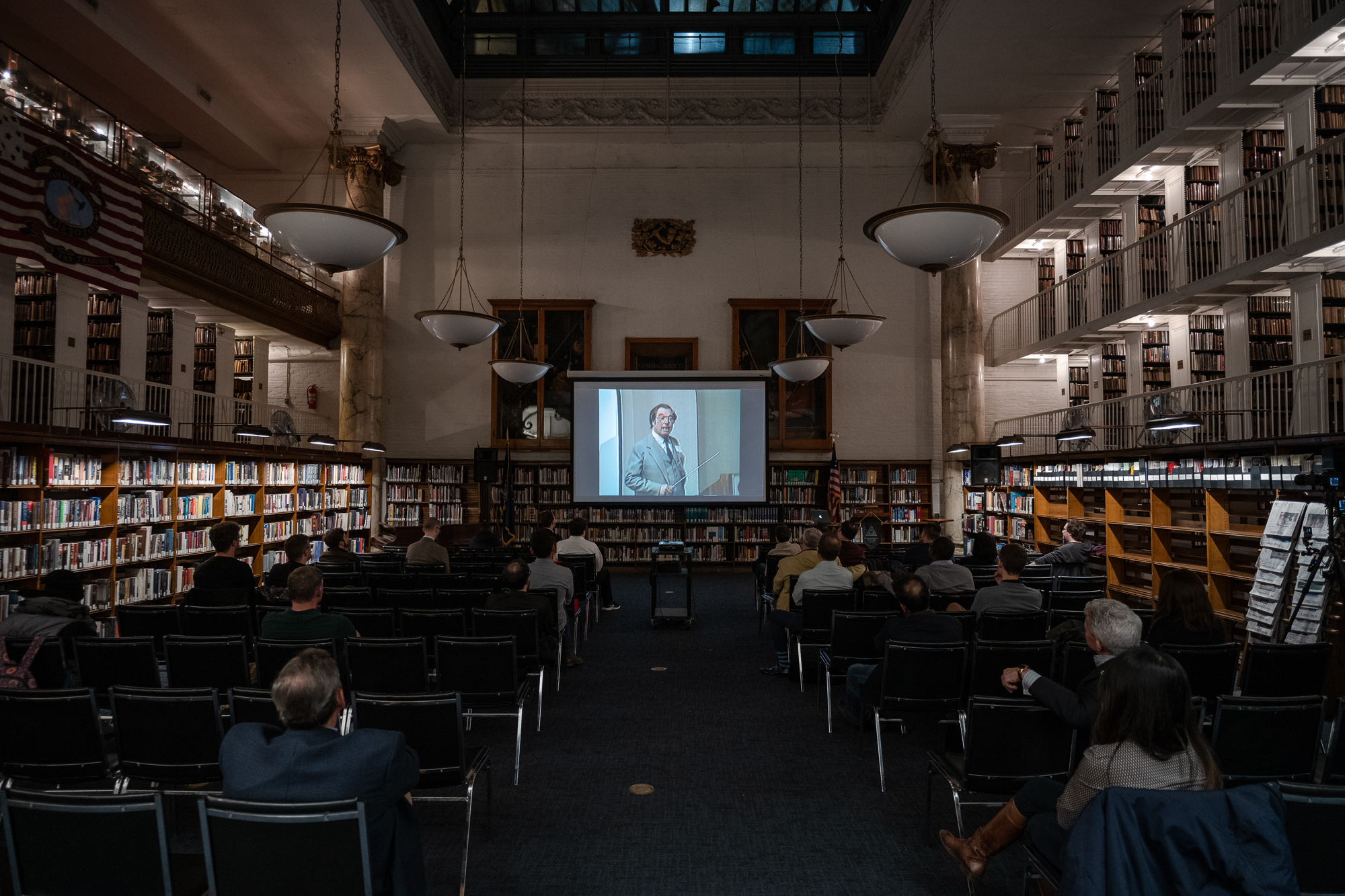
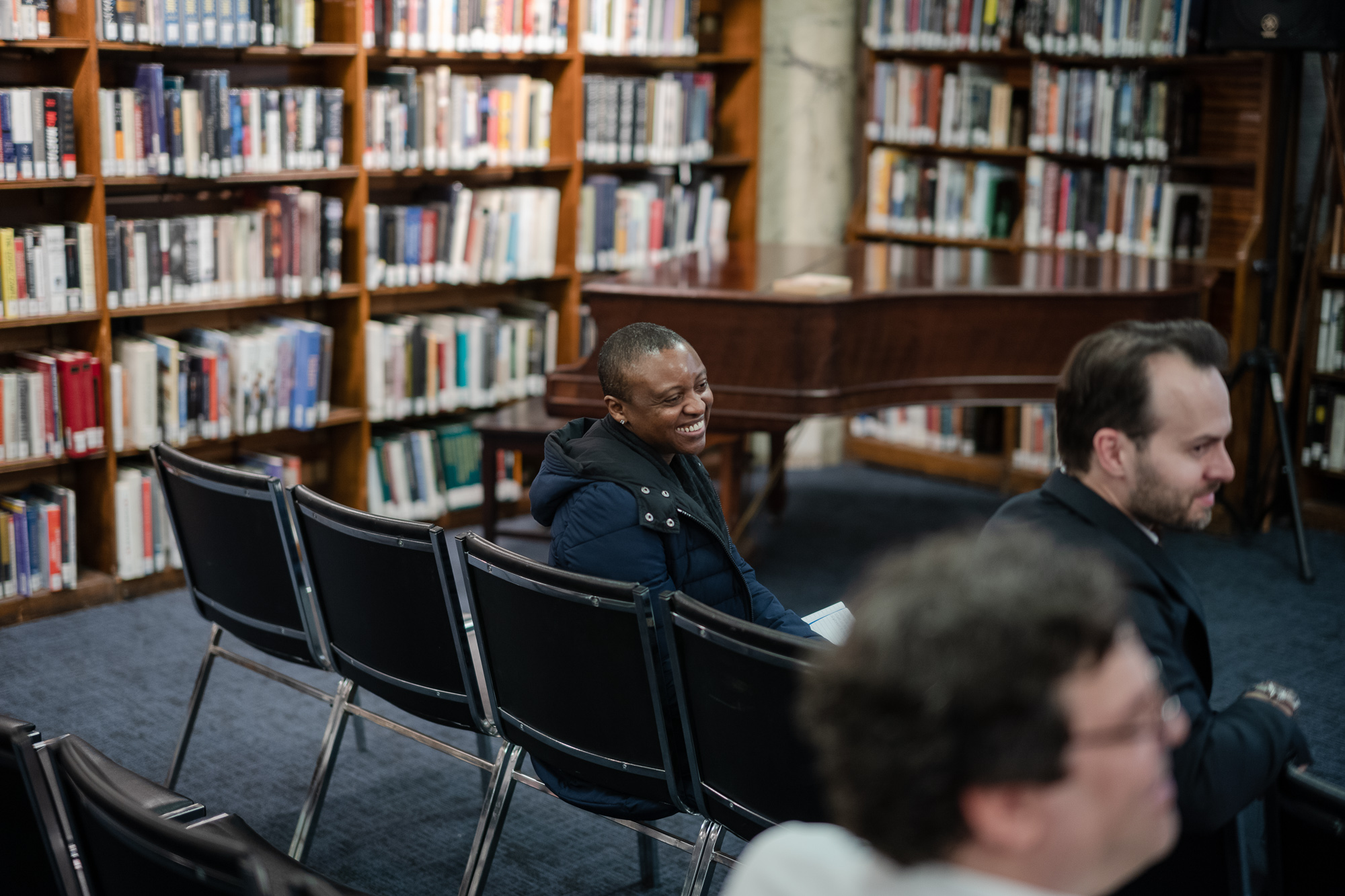

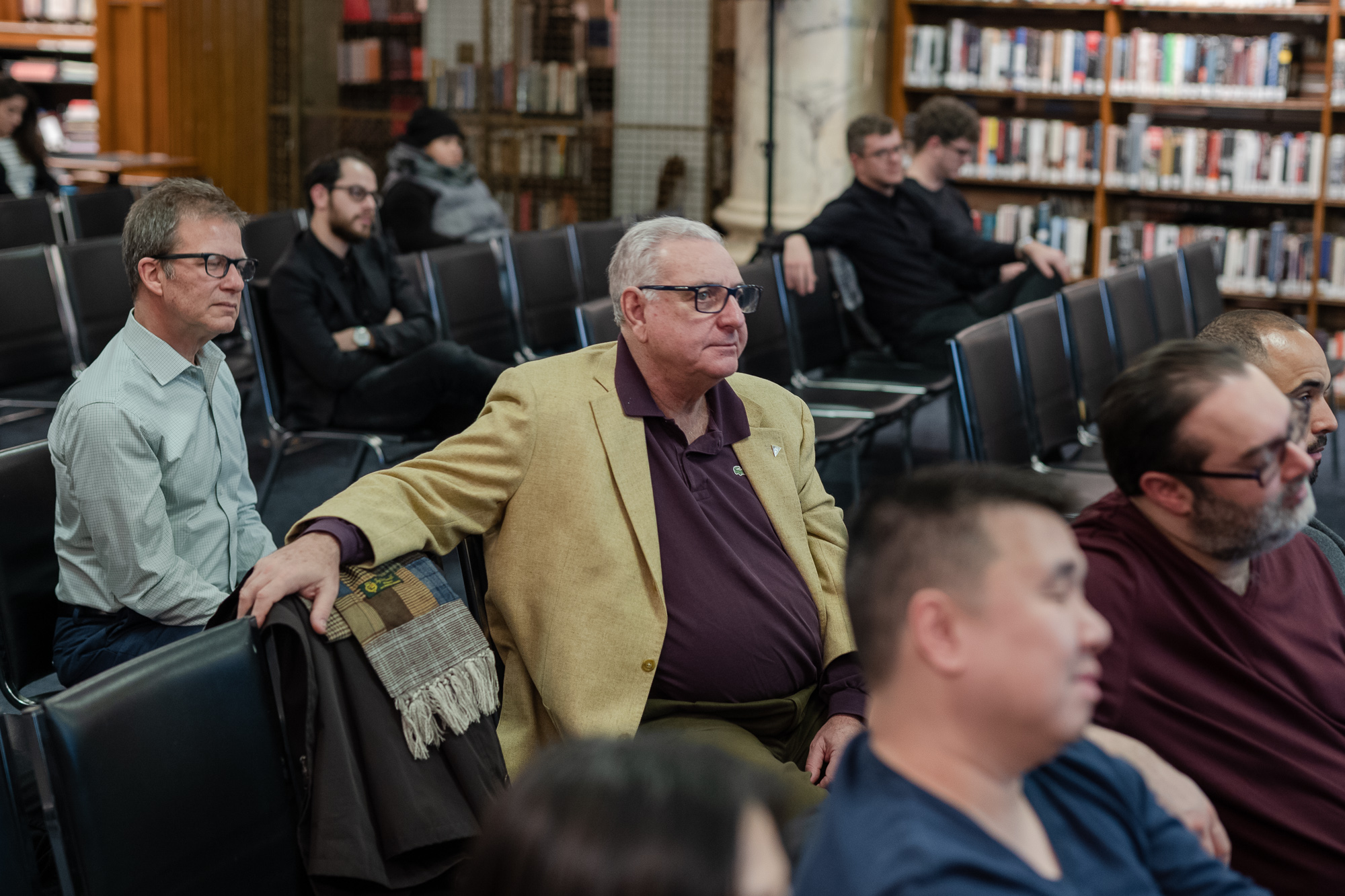
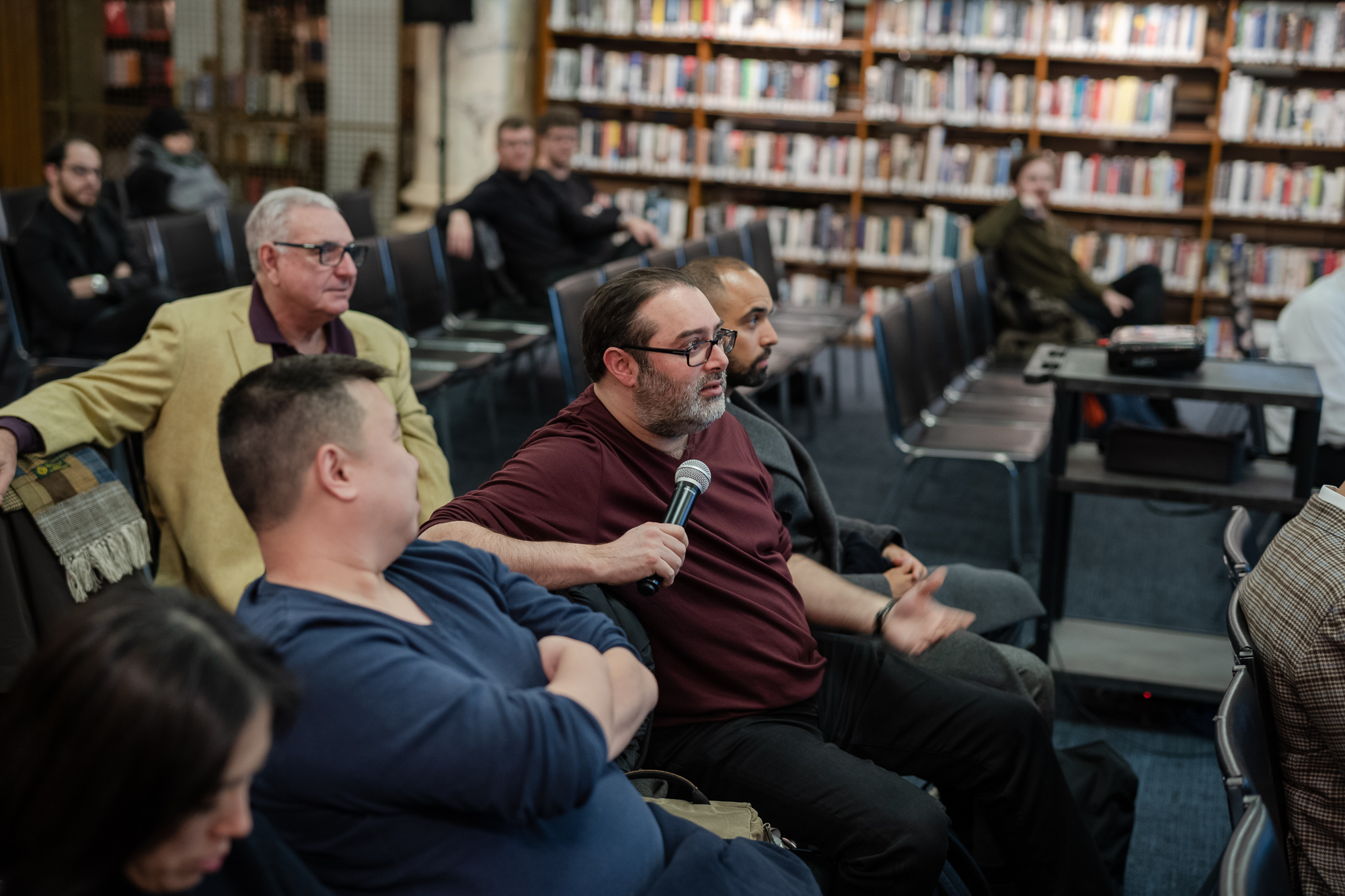
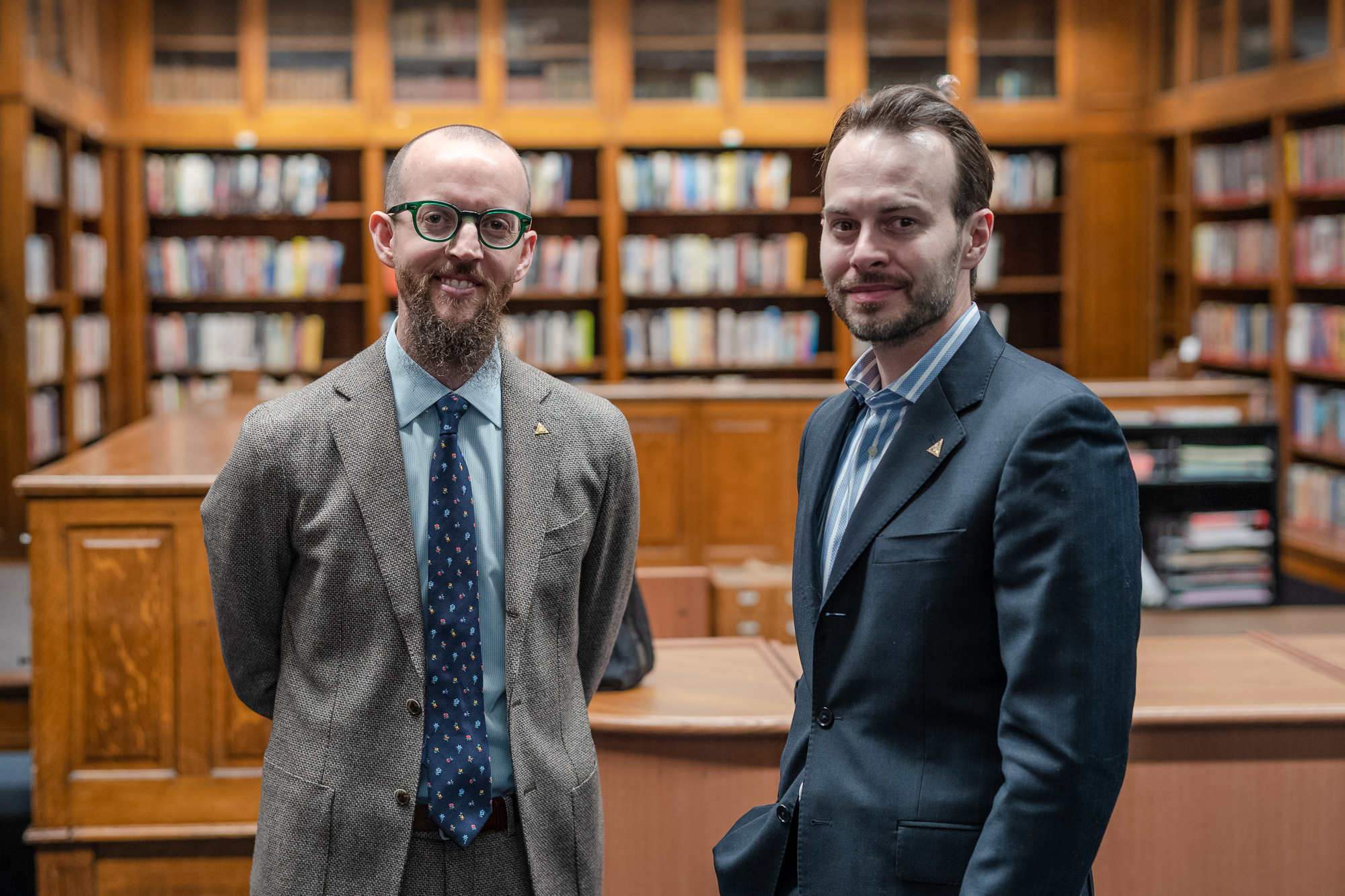
Photography by Atom Moore
Submitted by Melody Benloss, HSNY Librarian & Recording Secretary
The Horological Society of New York Offers Multiple $10,000 Scholarships to Watchmaking Students in the United States
The mission of the Horological Society of New York (HSNY) is one of education. As America’s oldest watchmaking guild, founded in 1866, HSNY strives to advance the art and science of horology, which is largely entrusted to watchmaking students.
Today, HSNY proudly announces a major expansion of its Henry B. Fried Scholarship. Beginning in 2019, HSNY will award multiple scholarships of $10,000 each. Any student who has been accepted to or is currently studying at one of nine full-time watchmaking schools in the United States is eligible to receive the award.
Prospective students may also apply, with the understanding that the scholarship is contingent on their acceptance to a full-time watchmaking school. The deadline to submit applications is Friday, March 1, 2019.
“The Horological Society of New York wants to help watchmaking students succeed in every way,” said Edwin M. Hydeman, Executive Director of HSNY. “The Henry B. Fried Scholarship was designated to ensure future generations of watchmakers.”
Scholarship recipients will be awarded at the Horological Society of New York's Annual Gala & Charity Auction on Wednesday, April 17, 2019.
Nicholas Manousos (HSNY's President, left) and Steve Eagle (HSNY's Director of Education, right) presenting the 2018 Henry B. Fried Scholarship to Mark Duckett (middle left) and Erik Gonzalez (middle right).
The Henry B. Fried Scholarship was created in 2017 in honor of Mr. Fried, one of America’s most recognized authorities in the field of horology and a former HSNY President (1954-1955).
While most watchmaking schools in the U.S. are free and tuition is covered by a sponsoring brand, professional watchmaking tools and living expenses are not covered.
“More watchmakers retire every year than the number that graduate, and HSNY is doing everything it can to reverse this trend,” added Nicholas Manousos, President of HSNY. “Thanks to the support of our generous sponsors, members and donors, we are able to continue to expand our scholarship program. We want to encourage as many people as possible to consider a career in watchmaking. It is a dynamic, vibrant and awarding industry. I wish all the best to the 2019 applicants!”
To learn more about the Henry B. Fried Scholarship and to read the full qualifications, please visit http://hs-ny.org/scholarship/. Any questions can be directed to info@hs-ny.org with the subject Henry B. Fried Scholarship.
Meeting Recap: Tradition and Innovation – a Contradiction?
Video recordings of lectures are available to members immediately (using your membership password), and the general public with a 2 month delay.
Andreas Strehler, Watchmaker and Owner of UhrTeil AG
December 3, 2018
Tradition. Innovation. These are words to describe what makes a brand stand out and signify what they stand for. And yet, those same words become rather intriguing when they are presented as being in conflict instead of complementary.
In the final lecture of the year at the Horological Society of New York on December 3, 2018, Andreas Strehler, Watchmaker and Owner of UhrTeil AG, contended that watch brands need to reconsider their notion of tradition and innovation if they want to remain relevant to current and new customers.
Tradition has a lot to do with history...
Strehler stated that the main goal of tradition is to maintain value - not just monetary value - but historical and technical value. The risk of too much tradition would lead to market saturation, lack of creativity within the brand’s collection and being out of fashion in the eyes of evolving customers. This conundrum was clearly illustrated by images of 28 gold clocks that differed by either a steeple or a dome.
Innovation applied to a traditional watch
Like with most topics, it all depends on how you choose to look at a situation.
Innovation Advantages: The creation of solutions for existing problems, new functions and increased reliability.
Innovation Disadvantages: New problems can arise, for example a drop in value if it becomes typical to each brand and is only repairable by replacing parts. Strehler referenced the 2006 Patek Philippe and the 2017 Tissot to illustrated such dilemma. He also provided an anecdote when he experienced a restoration issue on a 1940s Rolex. The company no longer had the part necessary for Strehler to restore the timepiece and in the end, he had to make the part himself. There were also examples of applied innovations to traditional watches such as the lever escapement and innovations that did not increase value, i.e. silicon escapements. Metal can be re-bent and polished - not so much with silicon.
In regards to being owner and watchmaker of his engineering and production company UhrTeil AG, Strehler embellished on his six-point approach on how he intends to keep his watch brand relevant. One of the approaches is to have “all documentation conserved for future watchmakers”. He strongly believes that the only way his brand can outlive him is to make sure that watchmakers know how to repair his specific timepieces, with the help of thoroughly documented phases of a timepiece’s life.
HSNY thanks Andreas Strehler for his lecture!
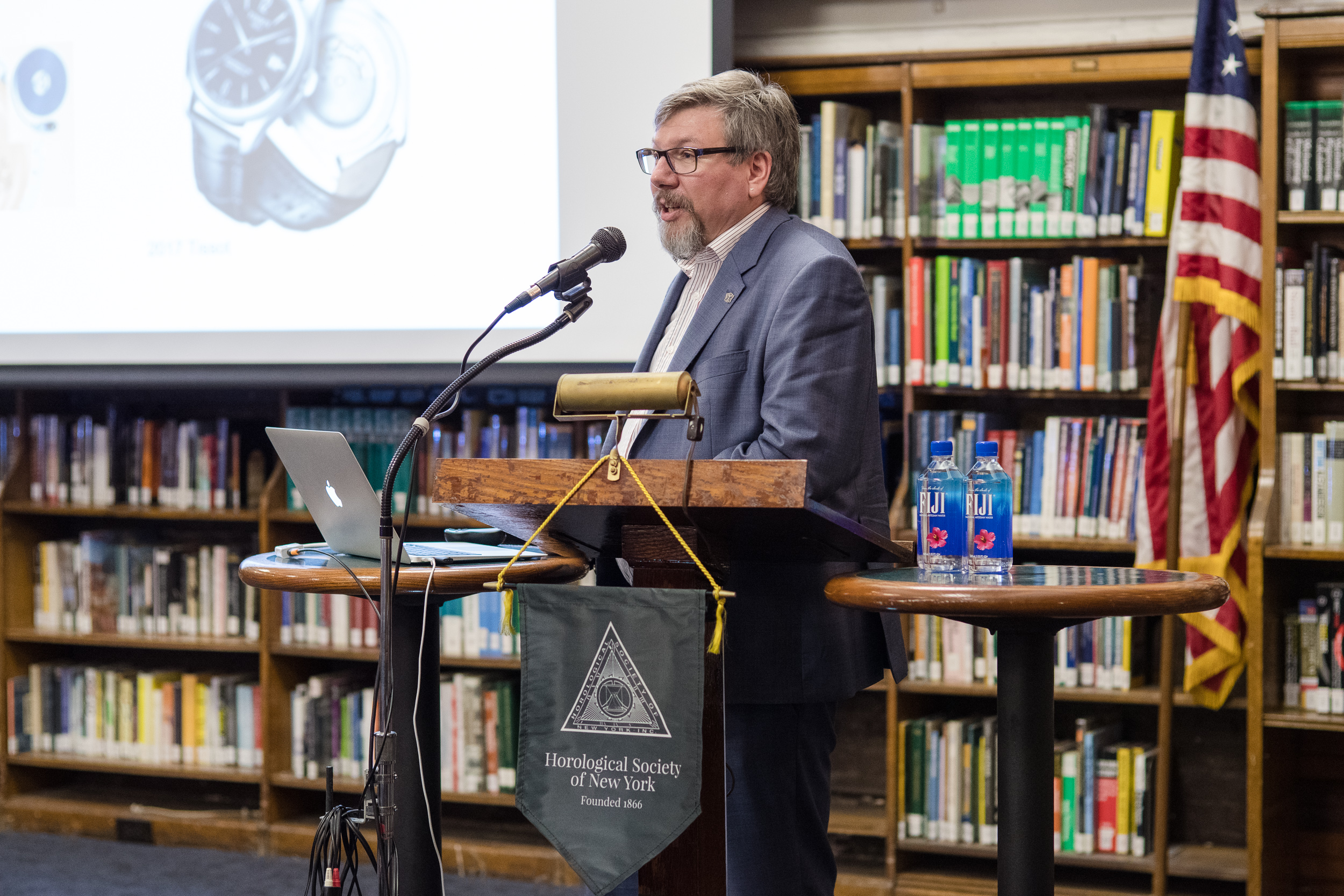
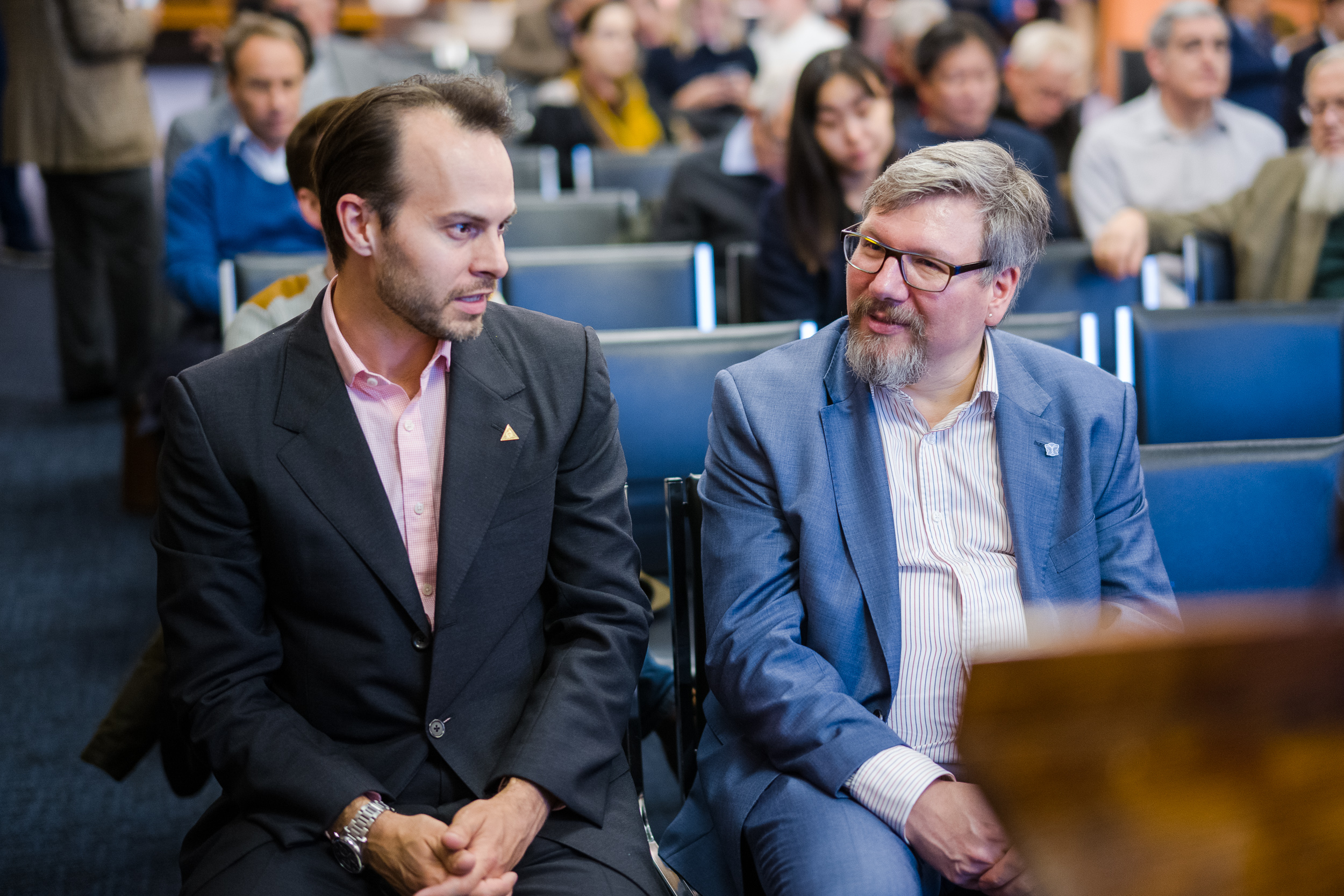
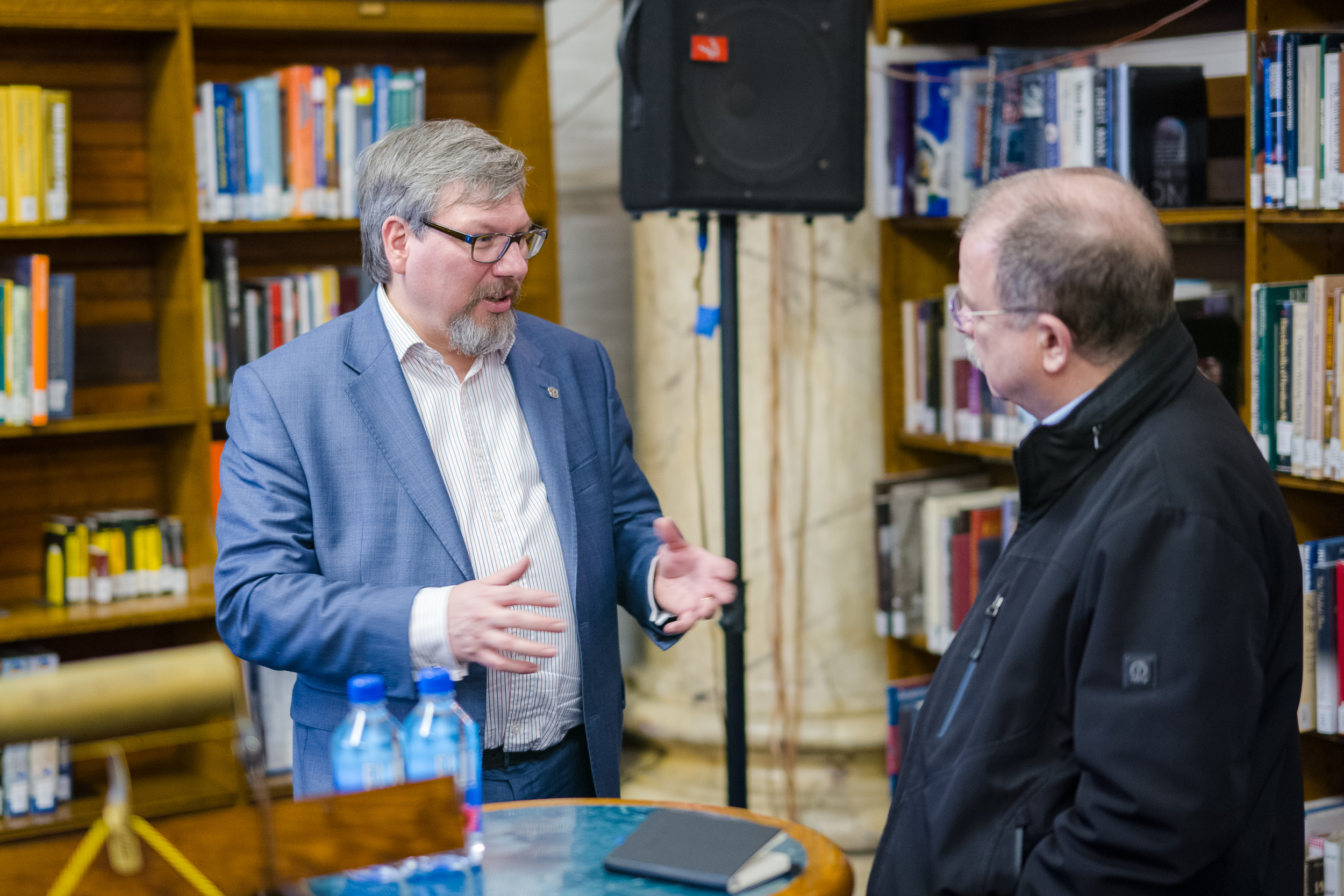
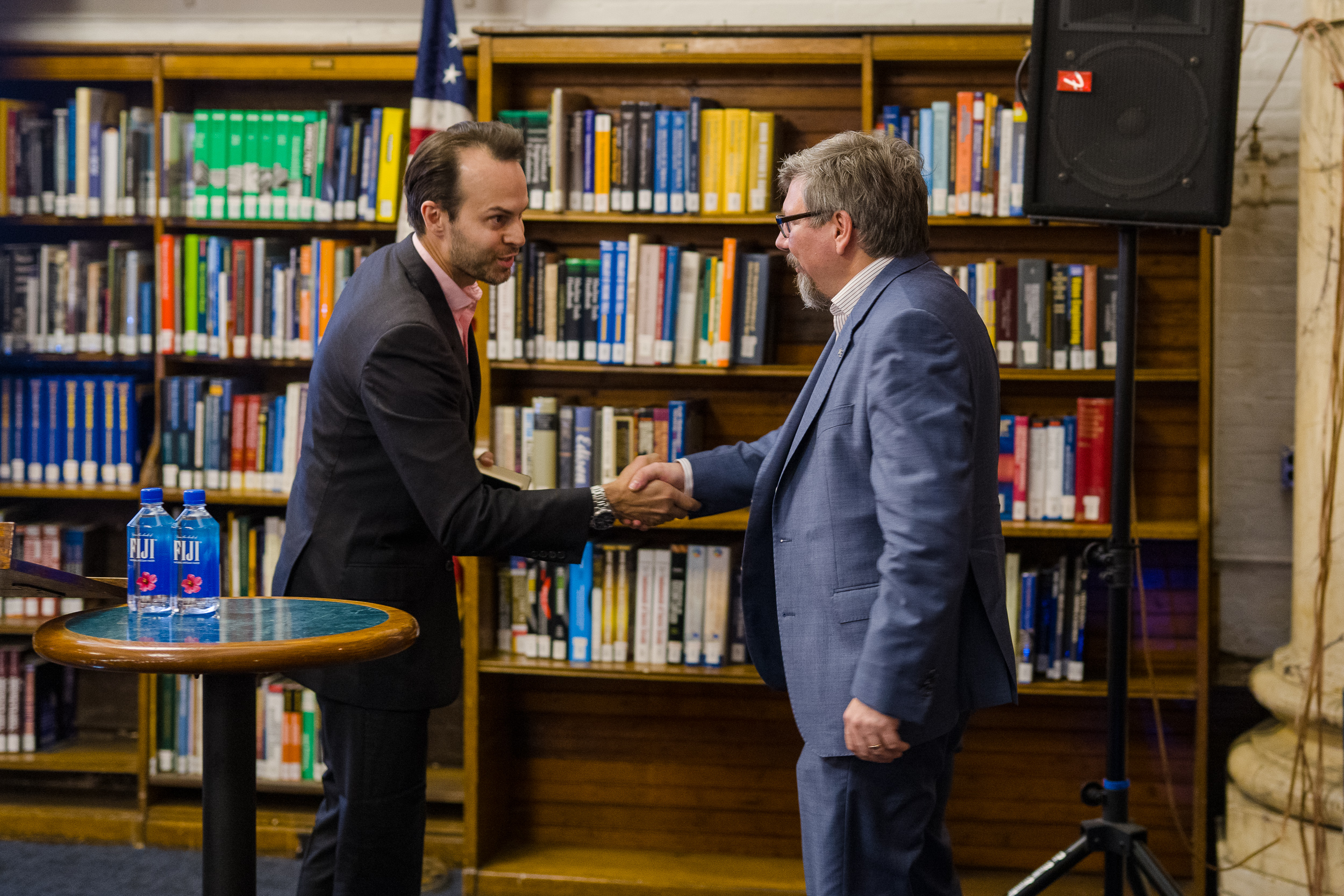
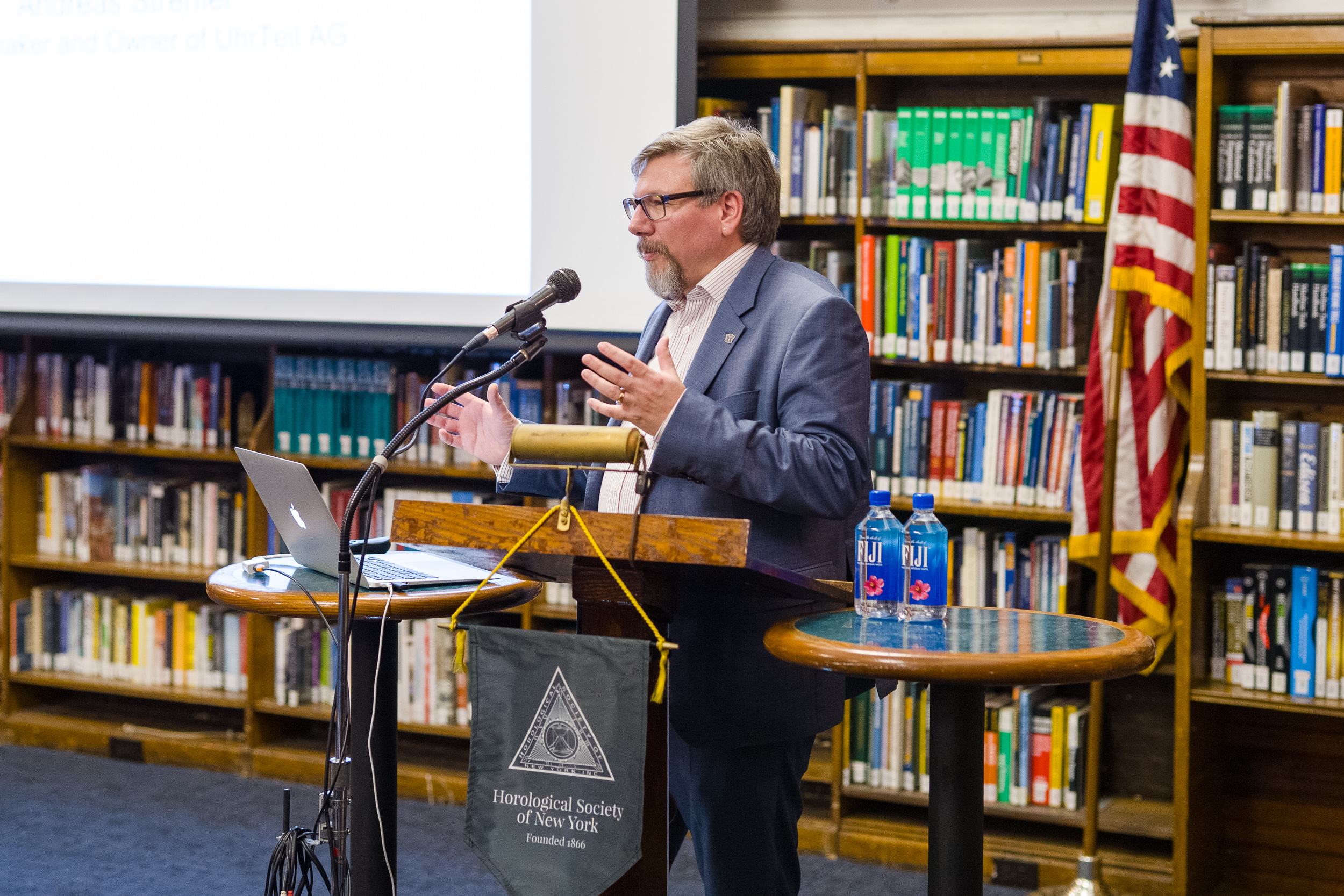
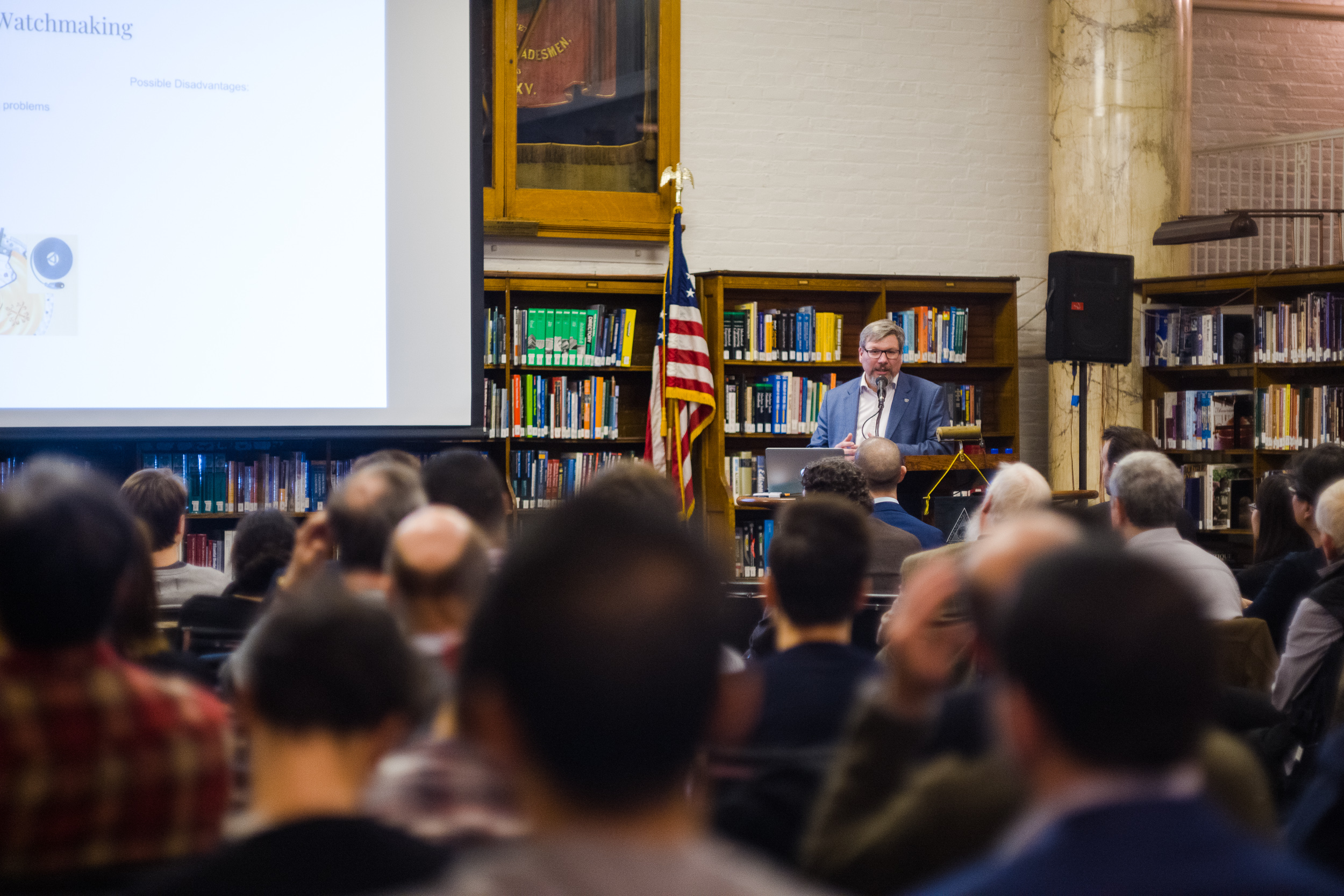
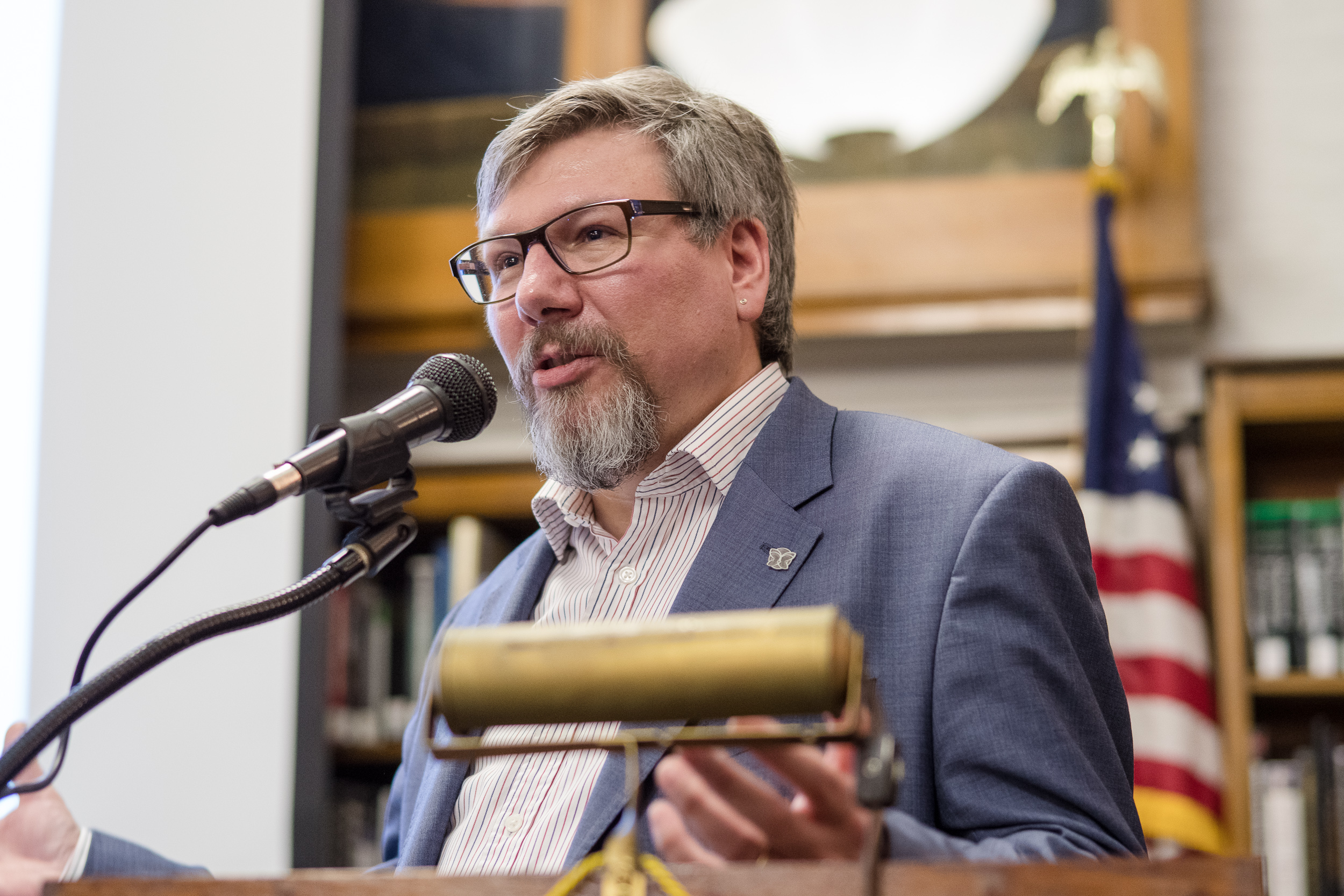
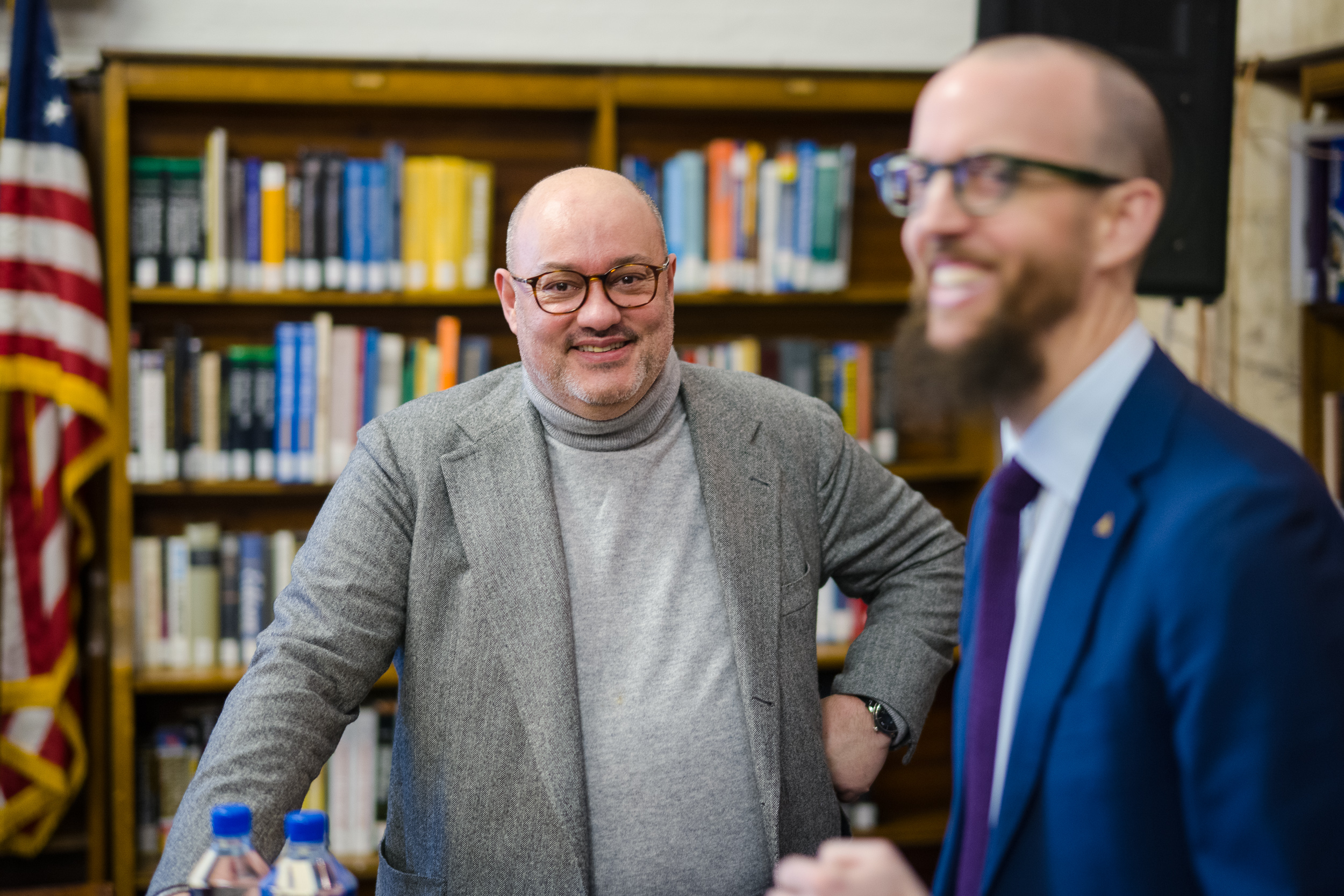

Photography by Atom Moore
Submitted by Melody Benloss, HSNY Librarian
In The News: HSNY Director of Development Ryan Jewell Breaks Down Swiss vs. Japanese Movements
Ever wonder what magical objects are inside a watch to make it tell time? What about the difference between movements assembled in different parts of the world? In this installment of WIRED’s [De]constructed series, HSNY Director of Development and Instructor Ryan Jewell performs a detailed disassembly of two Carpenter watches - making for a great horology lesson and one to satiate our curiosities!












